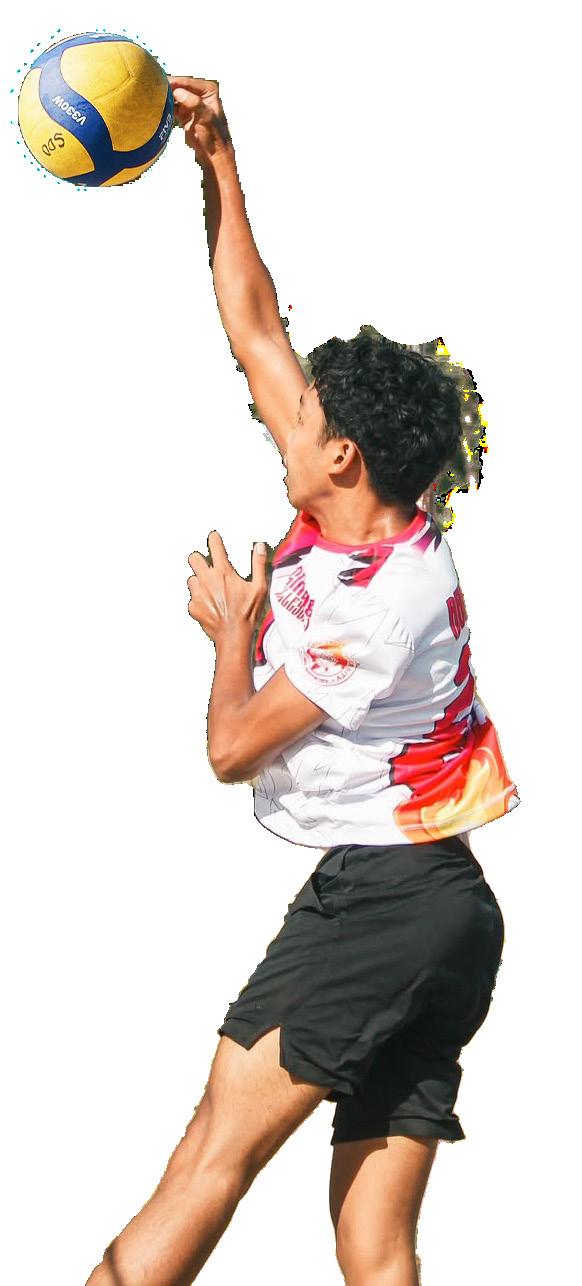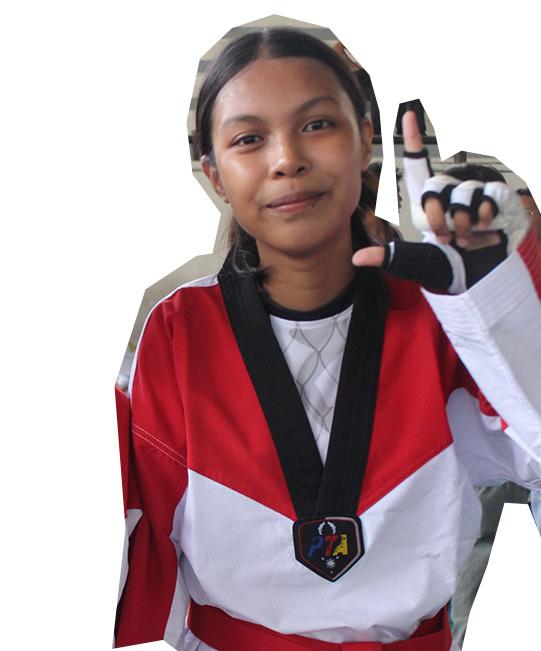








these diverse realities of today. I, as the Siklab Supreme Student Government
only solution to these problems, it is not a one-size-fits-all remedy. Believe me—as a person who has been using management calendars like Google Calendar, it’s not always easy to follow it by the book. It should also be considered that each student’s life circumstances are unique. Some may appear to have ample time, but others may be working students or breadwinners making it hard to cope with academic expectations. The narrative that students should simply ‘manage their time better’ dismisses

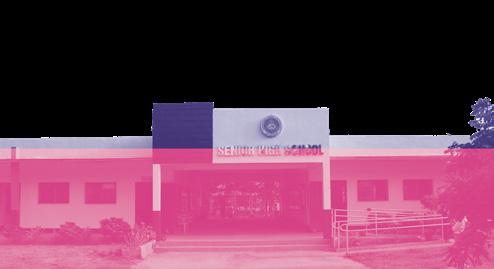



Pormal nang nanumpa ang mga bagong halal na Supreme Student Government (SSG) at Club Officers ng MSU-GenSan SHS Department sa idinaos na Oath Taking and Turnover Ceremony sa conference hall ng pamantasan, Agosto 28.
Kasunod nito, hinimok ni Vice Chancellor for Student Affairs, Prof. Norman Ralph B. Isla, ang mga opisyales na maging kasangkapan sa paglikha ng pagbabago at ligtas at mahusay na pamantasan.
“Nawa’y maging kasama namin kayo sa paglikha ng isang unibersidad o isang pamantasang ligtas at magaling. Nawa’y kayong lahat ay maging instrumento ng pagbabago na hinihingi natin,” pahayag ni Isla.
ni Aiya Colonia
Samantala, pinangunahan naman ng outgoing SSG President Ayesha Haya S. Tuan ang pagpasa ng pamumuno kay incoming SSG President Mohammad Hizam S. Tuan, na nagmarka ng isang bagong kabanata ng liderato sa paaralan.
Sa kanyang talumpati, ipinahayag ni Haya ang kanyang buong tiwala sa bagong hanay ng mga opisyales at kanyang binigyang-diin na ang kanilang mga posisyon ay hindi lamang isang titulo, kundi isang responsibilidad.
“To the new sets of officers, I have full confidence in your abilities to lead with integrity and courage. Remember that this is more than just a title— it’s a responsibility to uphold and respect the interest of our fellow students,” aniya.
Sa kanyang inaugural speech, ipinahayag naman ni Hizam ang kanyang hangarin na isama ang mga Sustainable Development Goals (SDGs) sa mga proyekto ng SSG.
“With this position, I am deeply encouraged to push for integrating the Sustainable Development Goals within our project proposals, accordingly allocating these goals and objectives with the events that they would like to propose. So I hope that the clubs present here today would be open in collaborating with
Opisyal na inanunsyo ng Mindanao State University (MSU) System si Atty. Shidik T. Abantas, MDM, LLM, bilang bagong

I
ang MSU-GSC ng isang public forum noong pagpili ng susunod nitong chancellor, kung

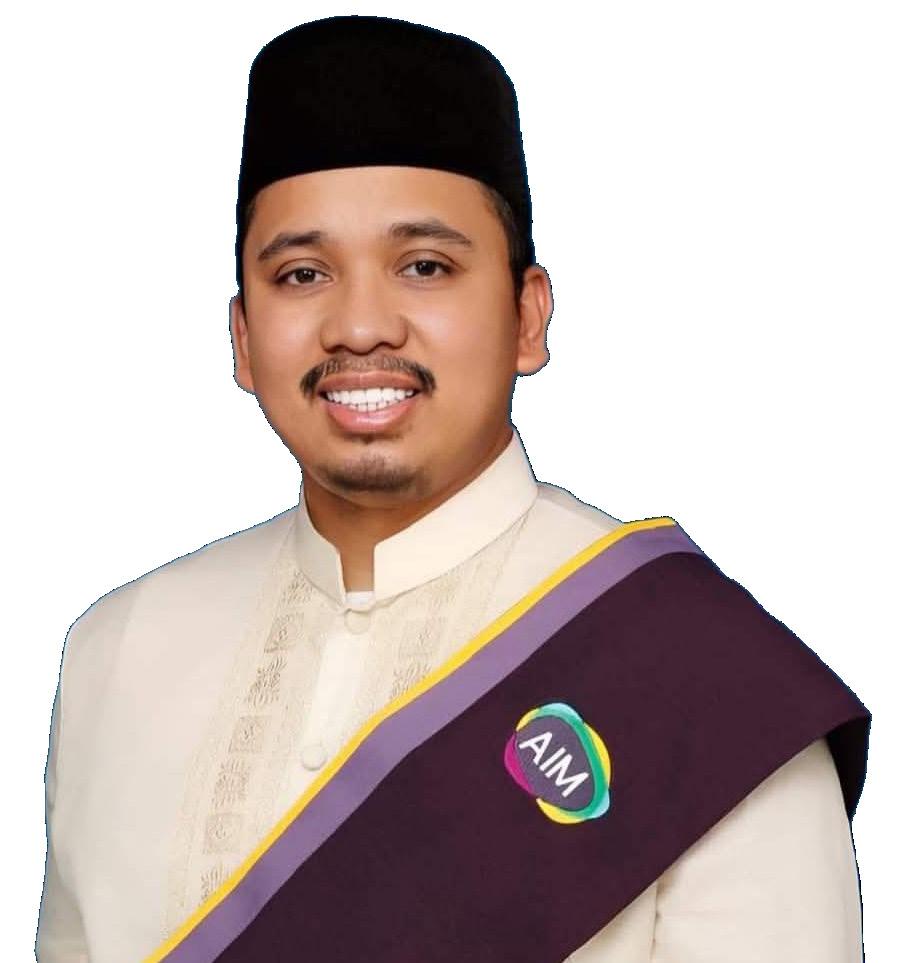
dinaos ng MSU-GenSan Senior High School ang taunang review session nitong Nobyembre 20, bilang bahagi ng paghahanda ng mga mag-aaral sa nalalapit na Mindanao State University - System Admission and Scholarship Examination (MSU-SASE) 2025.
Isinakatuparan ang serye ng rebyung ito sa Audio Visual Room (AVR) ng H Building at ng University Library, at pasilidad ng Siklab na tumuon sa mga asignaturang Earth and Life Science, Physical Science, at English.
Ayon kay Gng. Jorgelyn Rivera, Senior High School Directress, layunin ng isinagawang rebyu ang tiyakin na maging matagumpay ang mga mag-aaral na maipasa ang MSU-SASE.
“First and foremost, we organized the review session mainly to help the students pass the SASE. ‘Yun ang ultimate goal namin,” pahayag ni Rivera.
Dagdag niya, mahalaga ang sesyong ito upang matulungan ang mga mag-aaral na maging handa sa gaganaping admission test, kung saan nabigyan din sila ng pangunahing kaalaman at sinanay sa maaaring mangyari sa aktwal na pagsusulit.
“Ang purpose ng review session na ito ay i-condition ang mga bata sa actual test-taking. Bukod sa practical knowledge, na-expose din sila sa pagsagot ng mga tanong mula sa Language and Science component at iba pang areas ng SASE. We even followed the timeframe na ginagamit din sa SASE,” sabi niya.
mabuting pamamahala at ang panawagan para sa walang sawang pagsisikap upang maiangat GenSan sa pandaigdigang
Nakatuon ang kanyang plataporma sa dedikasyon, pagkamalikhain, at papel ng bawat indibidwal sa loob ng unibersidad upang makamit ang layuning ito at matugunan ang patuloy na umuusbong na mga pangangailangan ng bawat MSUan, partikular sa tuntuning akademiko at kapakanan ng mga mag-aaral.
Sa isinagawang survey ng Himig Isko, mahigit 175 estudyante ng Siklab ang nagpahayag ng kanilang suporta para sa bagong talagang Chancellor ng pamantasan.
Ayon kay Hizam Tuan (ABM 12-Ford), pinupuri niya ang mga inisyatiba ni Atty. Abantas sa loob ng dalawang buwan mula nang maitalaga, lalo na ang regular na paglalathala ng dokumentasyon ng kanyang mga aktibidad sa social media.
“I appreciate how he goes on the ground to address issues in the university, especially with student facilities that need urgent attention. Additionally, I love the gesture of documenting his actions, allowing us to at least gain a surface-level understanding of what he has been doing since his appointment,” ani Tuan.
Sa kabila nito, may ilang estudyanteng nagsabing hindi pa nila nararamdaman ang presensya ng bagong chancellor o ang anumang agarang epekto at pagbabago para sa mga mag-aaral.
“While I understand that transitions of this nature can take time, it seems that the new chancellor’s influence has yet to be felt in a tangible way. Perhaps this is due to their being still relatively new in their role, but currently, I do not sense any immediate impact or changes to the student experience,” ayon kay Geoanna Boloso (STEM 11-Ganymede).
Sa kasalukuyan, nagsasagawa si Atty. Abantas ng mga pagpupulong sa iba’t ibang sektor ng unibersidad at sa labas nito upang mapalakas ang kolaborasyon ng mga kawani, guro, at mag-aaral, para sa susunod na henerasyon ng MSUans.

in MSU-SASE 2025 mock test
Nagpahayag naman ang isa sa mga kalahok na si Felipe Palma Jr. (12 HUMSS-Comte) na ang isinagawang review sessions ay isang mahalagang pagkakataon upang magkaroon ang mga mag-aaral ng sapat na kaalaman sa pagharap sa nalalapit na admission test.
“I do believe that the review session spearheaded by the faculty is a great opportunity for us to have a substantial knowledge in taking the coming MSUSASE and it somewhat made me feel at ease,” ani Palma.
Nakatakda namang isagawa ang karagdagang sesyon na magtatampok ng rebyu para sa Mathematics at isang mock test sa Nobyembre 27.


Mindanao State University-General Santos Senior High School (MSU-GenSan SHS) has announced the top 20 students and subject topnotchers from the mock test held in preparation for the upcoming Mindanao State University - System Admission Scholarship Examination (MSU-SASE) 2025.
Around 200 Grade 12 students participated in the review sessions organized by the Senior High School (SHS) faculty on November 20 and 27,
covering Aptitude, Language, Mathematics, and Science.
After the review sessions, a mock test was conducted on November 27 to simulate the actual examination and help students prepare for the highly competitive MSU-SASE.
Among the 200 examinees, 40 students from different sections earned spots on the top 20 list, showcasing their excellent performance in the mock test.
ang loob ng kanilang mga kapwa mag-aaral.
Dagdag pa niya, mahalaga ang pagkakaroon ng isang komunidad kung saan may pagkakataon ang lahat na maipakita ang kanilang potensyal.
“This is a collaborative effort. It’s not just about you being elected as leaders, but it’s about how you empower your peers, how you empower the people around you to also shine,” ani Rivera. “I want to build a community wherein everybody is given the opportunity to also showcase their potential… And remember, you have our full support coming from the top management,” wika ni Rivera.
Pagkatapos ng seremonya, agad na nagpakita
ng aksyon ang mga bagong halal na opisyal at nagsagawa ng semestral planning sa hapon, kasama ang mga club officers, bilang paghahanda sa mga aktibidad na nakatakda para sa unang semester ng school year.

Unang Homeroom, General PTA
Meeting ng MSU-GenSan SHS, idinaos na ni

MRivera, itinalaga bilang bagong SHS
Opisyal nang itinalaga ng Mindanao State University - General Santos (MSUGenSan) si Gng. Jorgelyn C. Rivera, LPT, MAEd-CAR, bilang bagong Direktor ng Senior High School (SHS) para sa Taong Panuruan 2024-2025, na epektibo simula Agosto 15, 2024.
Hinirang si Rivera, kasalukuyang propesor ng wika sa SHS Department, bilang Direktor sa bisa ng isang espesyal na kautusan na nilagdaan noong Agosto 14 ni Acting Chancellor J.D. Usman D. Aragasi, MPA.
Bilang isang alumna ng MSU-GSC na nagtapos ng Batsilyer na Digri sa Ingles, dati ring nagsilbi si Rivera bilang SHS Academic Head at nagtuturo na rin sa unibersidad sa loob ng halos isang dekada.
atagumpay na idinaos ang unang Homeroom at General Parent-Teacher Association (PTA) Meeting ng MSU-GenSan Senior High School noong Setyembre 3, kung saan nahalal ang mga bagong opisyal ng PTA para sa taong panuruan 2024-2025.
Nagsimula ang araw sa mga homeroom PTA meetings ng bawat pangkat, kung saan nahalal ang mga magulang na magsisilbing lider ng kanilang mga klase.
Matapos ang mga homeroom meetings, nagtipontipon ang lahat ng mga homeroom president sa General PTA Meeting na ginanap sa conference room ng paaralan.
Nahalal bilang bagong presidente ng PTA si G. Jose
Grade 12 STEM students explore sustainable engineering in USAID WISER Seminar
G
rade 12 STEM students from Mindanao State University – General Santos Senior High School attended the second session of the USAID ESP: WISER Project seminar, which focused on promoting sustainable engineering practices.
This initiative was part of the US Agency for International Development’s (USAID) Energy Secure Philippines (ESP) activity that was held on November 18 at the Office of Student Affairs Activity Area.
Engr. Ivan Jude Santonia, project officer, opened the event with an encouraging message to the students.
He expressed his hope that the seminar would serve as an eye-opener for students interested in exploring various fields of engineering.
Santonia also introduced the students to the USAID app, which includes useful reviewers for senior high school STEM-related subjects.
Jezzu Quimosing
Meanwhile, the resource speaker, Engr. Arianne Dale Daligdig, shared with the audience her insights on the engineering field.
She covered a range of topics, including “Introduction to Engineering,” “Career Paths and Opportunities in Engineering,” and “Insights in Engineering.”
Afterward, the seminar transitioned into a hands-on workshop, where students were grouped by section to build models of windmills and solar panels.
Each group showcased their projects, with the team from 12 STEM - Euler earning the top spot for their innovative solar panel model.
Finally, the program concluded with closing remarks from SHS Director Mrs. Jorgelyn C. Rivera, who commended the students for their participation.
USAID’s initiative remains dedicated to inspiring the next generation of engineers to lead in the field of sustainable energy.

Rene Dizor, samantalang si G. Ronell Catojano naman ang nahirang na bise presidente.
Binubuo rin ang organisasyon ng iba pang opisyales na sina Gng. Aprilyn Ampuyas bilang kalihim, Gng. Barbara Ghia Cagas bilang ingat-yaman, at Gng. Raquel Mernilo bilang tagasuri.
Sa kanilang unang talakayan, ipinahayag ng mga bagong opisyales ang kanilang mga plano para sa pagpapabuti ng kalagayan ng mga mag-aaral at ng paaralan.
Kasama rito ang pagdaragdag ng mga wall fan sa bawat silid-aralan, pagtatayo ng mga shed sa gusali ng Siklab, at paglalagay ng bubong para sa student lounge.

Nagpahayag ng suporta ang pamunuan ng paaralan sa mga bagong opisyal at sa mga proyekto nilang nakahanay para sa taong ito.
Inaasahan na ang pagkakaisa ng mga magulang, guro, at estudyante ay magdadala ng mas matagumpay na taong panuruan sa MSU-GenSan Senior High School.

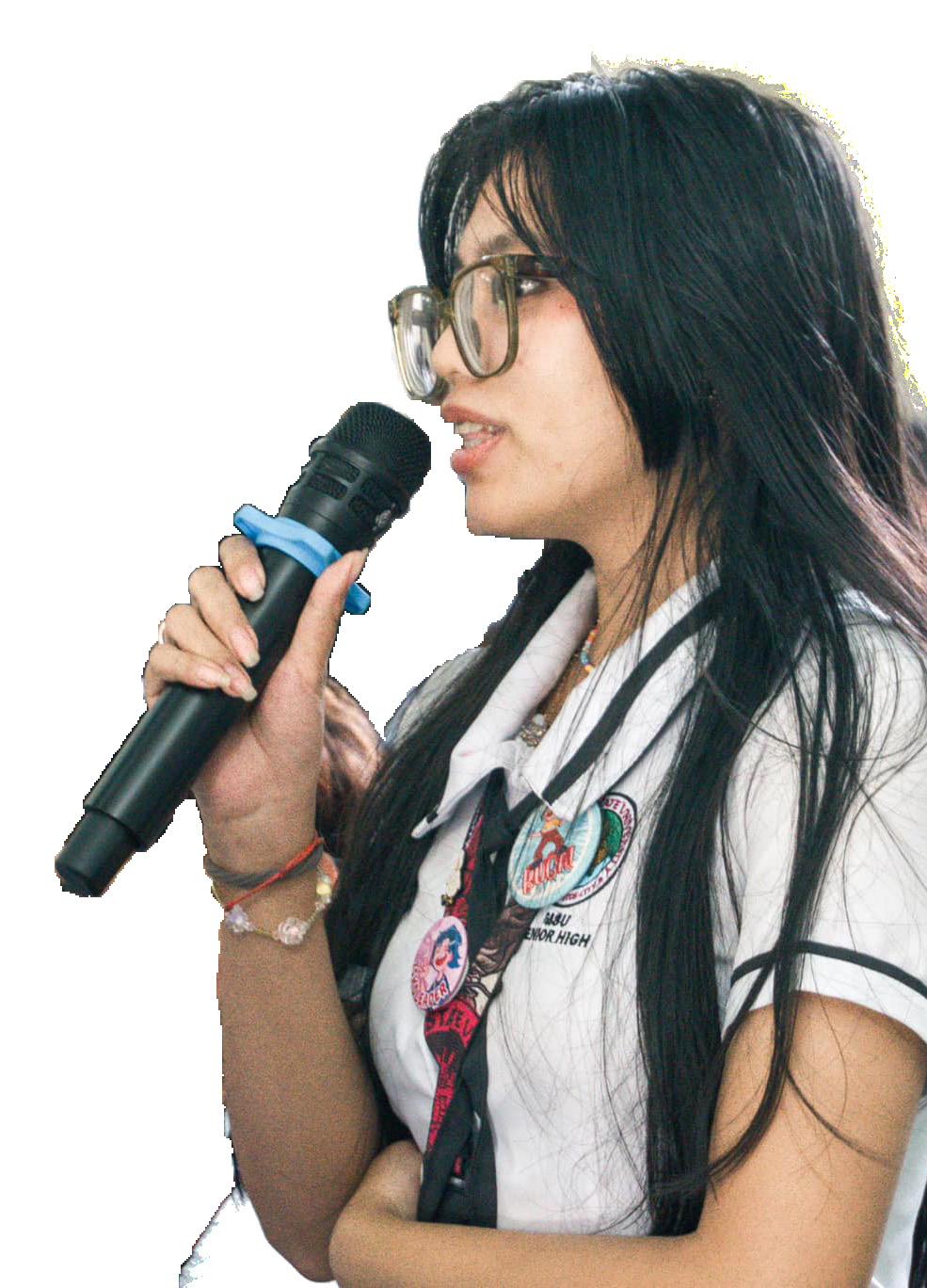
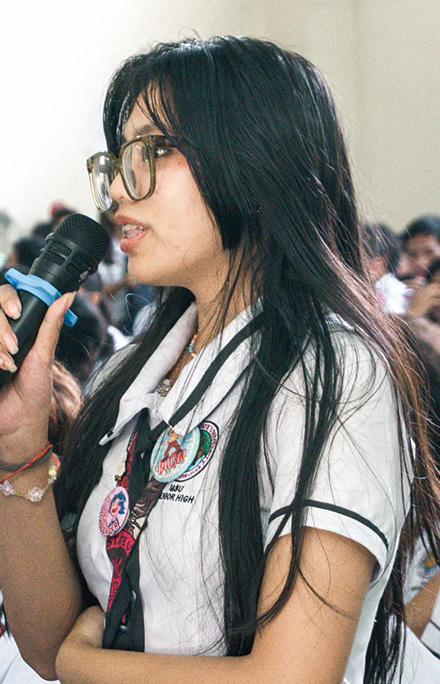
MSU-SASE 2025, idinaos na may 14,000 examinees by
Tinatayang mahigit-kumulang 14,000 na mga senior high school na magaaral ang nakilahok sa Mindanao State University-System Admission and Scholarship Examination (MSU-SASE) 2025 upang maging mapabilang sa susunod na salinlahi ng MSUans at “Iskolar ng Bayan.”
Nagtipon-tipon ang mga estudyante mula sa iba’t ibang paaralan na pumili sa MSU-GenSan bilang kanilang pangunahing campus sa mga itinalagang testing center noong Disyembre 1, 2024, sa pagasang makapasa sa pagsusulit.
Ayon sa isang panayam ng Bagwis, sinabi ni Admission Director at SASE Coordinator Prof. Jerry Dela Cruz na mas pinaaga ang petsa ng pagsusulit dahil makakaapekto ito sa proseso ng pagpapatala ng mga kumuha ng exam.
MSU-GenSan hosts SDG talk, public speaking workshop with Indonesian delegates by Jezzu Quimosing
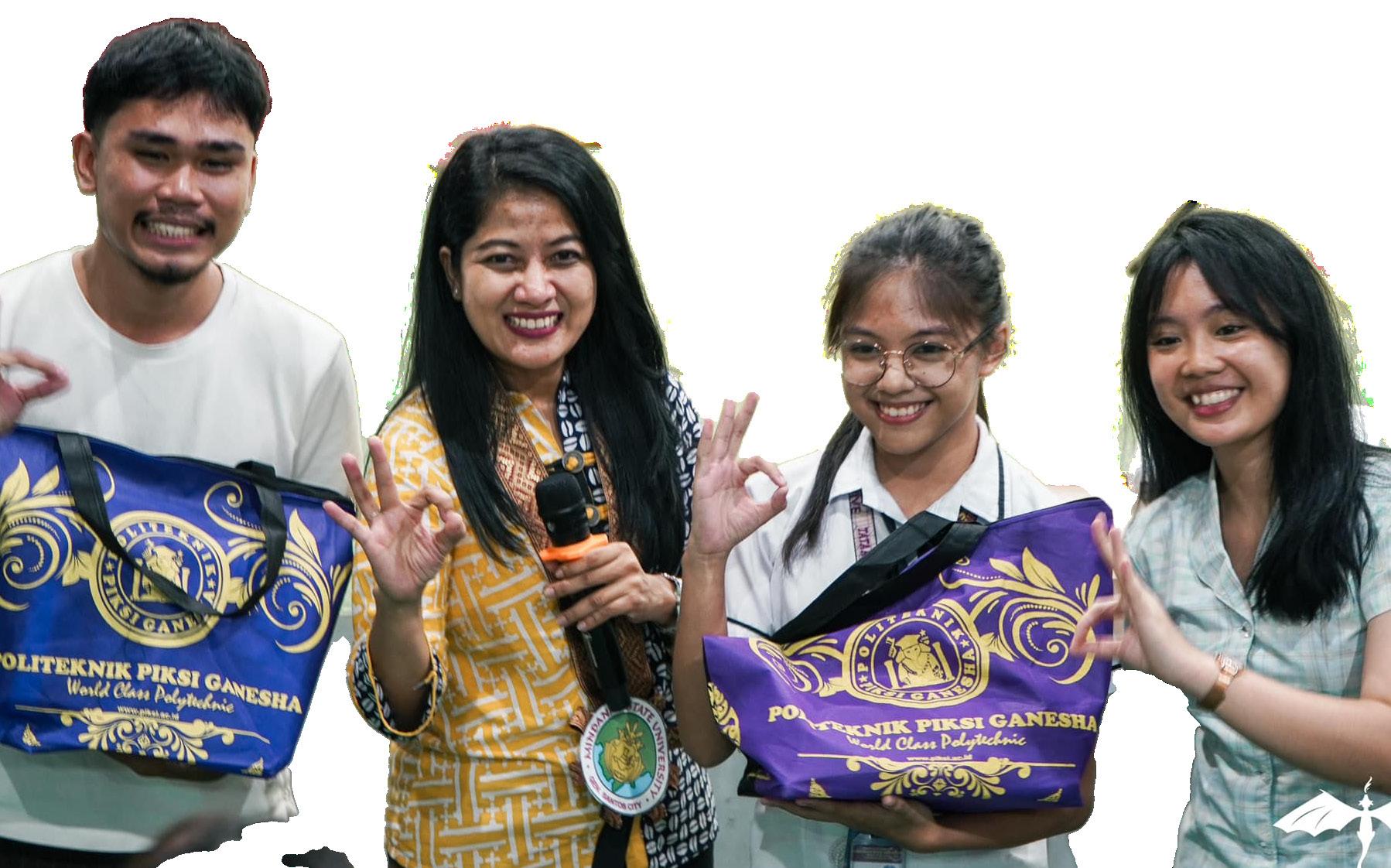
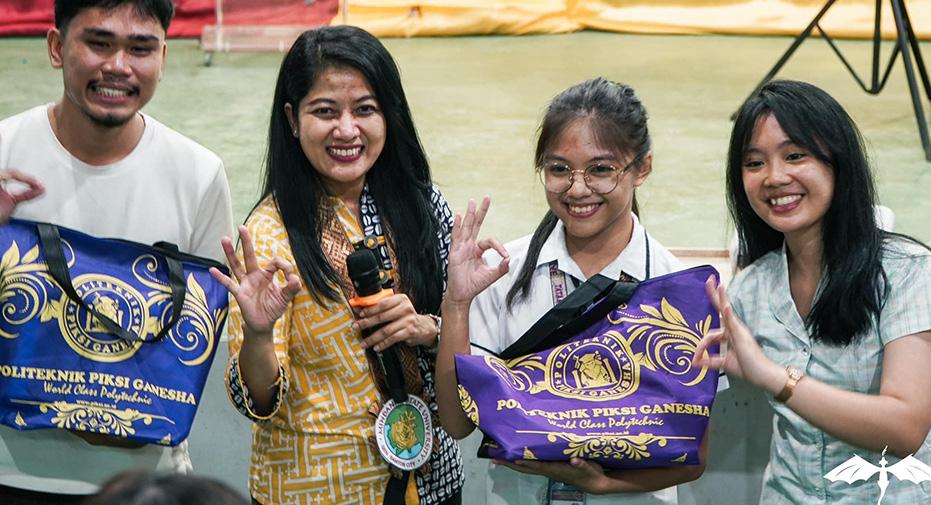
Following the talk, the Public Speaking Workshop commenced, where Christinawati shared practical tips on effective communication and engaged students in a 30-second to one-minute pitching activity.
Ganesha in Indonesia.
“We offer international classes for ten students, with a full scholarship—everything is free until you graduate,” said Dr. H. K. Prihartono Ah, DRS, S.SOS, S.KOM, M.M., MOS, CMA, MPM, Director of Politeknik Piksi Ganesha, as he introduced the Indonesian delegation and welcomed the participants.
Prof. Anderson V. Villa, Ph.D. OIC-Director of the MSU-GenSan Office of International Affairs, encouraged students to seize the opportunity to study abroad.
“To our senior high school students, you are strongly encouraged to consider our partner, Politeknik Piksi Ganesha. Everything is free, even the allowance, in Bandung,” he said.
Santy Christinawati delivered an engaging presentation on how Politeknik Piksi Ganesha integrates the 17 Sustainable Development Goals (SDGs) into its institutional vision.
This collaborative event emphasized the value of global partnerships and empowered students with essential skills for advocacy and leadership, marking another milestone in MSU-GSC’s commitment to internationalization and holistic education.
Bagong Vice
ng MSU-GenSan, kinilala ni Aiya Colonia
Muling pinagtibay ng Mindanao State University – General Santos ang dedikasyon nito sa kahusayan at serbisyo sa isinagawang panunumpa ng mga bagong itinalagang Vice Chancellors at Campus Secretary noong Enero 6, 2025.
Pinamunuan ni Chancellor Atty. Shidik T. Abantas ang seremonya na batay sa mga opisyal na appointment na ginawa ni MSU System President Atty. Basari Dimakuta Mapupuno.
Kinilala ang mga bagong Vice Chancellors na sina Dr. Mishell Lawas bilang Vice Chancellor for Academic Affairs, Dr. Norman Ralph Isla bilang Vice Chancellor for Student Affairs, Dr. Randy Asturias bilang Vice Chancellor for Planning and Development, at Prof. Sheila Loable bilang Vice Chancellor for Administration and Finance.
Kasunod nito, itinalaga si G. Monlouie Sorzano, guro mula sa Senior High School Department, bilang bagong Campus Secretary ng MSU-GenSan.

Sa pamumuno ng mga bagong opisyal, umaasa ang unibersidad sa kanilang makabuluhang kontribusyon para sa isang mas progresibo at

Himig AskKo for MSU SASE 2025: A Legacy-Defining Journey
“Apektado tayo kasi in the sense na ‘yung mga SASE takers natin na medyo alanganin ‘yung mga score nila, they cannot wait for us na kailan sila pwedeng ma-accommodate….so ‘pag mataas pa ‘yung time at nalaman natin na ‘di pala sila mag-enroll dito, so naka-lower na ang cutoff kasi we give mean to SASE, wala naman tayong ibang criteria, kundi SASE lang,” pahayag ni Dela Cruz. Ayon sa kanya, pareho pa rin ang naging paghahanda ng unibersidad, maliban sa unang pagkakataon na ang lahat ng proctor ay mula sa mga guro ng iba’t ibang kolehiyo.
“Priority man talaga ang faculty because we know na faculty members have at least first-hand experience in classroom management,” aniya.
Nilinaw rin ni Dela Cruz na mahigit 8,000 ang kumuha ng pagsusulit sa GenSan campus, habang ang iba ay nakatalaga sa iba’t ibang testing center.
Tinatayang ilalathala ang listahan ng mga nakapasa sa SASE 2025 sa MSU Main website bago magwakas ang taong panuruan 2024-2025.
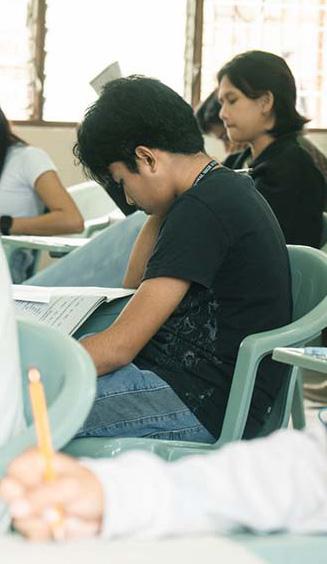
Sa bawat bulong ay nakapaloob ang mga kuwentong naghihintay na marinig, na siyang naging inspirasyon ng Pista ng Pelikulang Siklab (PPS) 2025, ginanap sa Mindanao State University-General Santos Senior High School (MSU-GenSan SHS) noong Enero 6-7.
Sa temang “BULONG,” itinampok ng mga magaaral ng MSU-GenSan SHS ang kanilang mga sariling gawang pelikula sa muling pagbubukas ng PPS para sa taong 2025.
Naglalayon ang naturang pista na magbigayboses sa mga bulong na nagtataglay ng kwentong naghihintay na marinig at sumasalamin sa mas malalalim na aspeto ng buhay at lipunan.
Sa pagtatapos ng PPS, opisyal na inanunsyo ang mga nagwaging pelikula at filmmaker, kung saan itinanghal bilang Best Film ang “The Blame,” sa
Mindanao State University - General Santos Senior High School demonstrated excellence at the 2nd General Santos City National Statistics Month (NSM) Research Forum, held at the University of Santo Tomas (UST) - General Santos Campus last October 11, where the Siklab researchers showed exemplary performance and bagged multiple awards in their respective event categories.
Out of 59 accepted research submissions from various educational institutions and government agencies in the locality, the following researchers emerged on top, bringing honor to the university by collectively securing the most awards at the recent research forum:
For the Paper Presentation event in the Student Category, Rendex Dave Quintinita bagged the Best Oral Presenter and Best Research awards, each with a corresponding cash prize, for his group’s quantitative study entitled “Grade 12 Students’ Perceived STEM Curriculum Implementation as Moderating Influence on their Mathematical Selfefficacy and Mathematical Literacy.”
Also, Sean Robert Abranilla won 3rd Best Research and a cash prize in the same event for his group’s qualitative study entitled “Real Eyes Realize Real AIs: Perception of MSU-GSC High School Teachers on the Academic Use of Artificial Intelligence.” Meanwhile, for the Paper Presentation in the Professional Category, Mr. Ralph Laurence Valdueza, MAEd, won the Best Oral Presenter and 2nd Best Research awards, plus cash prizes, for his study entitled “AI-Based Tools Acceptance
“Titila
by Anthony Cuizon
J
ett Elijah Tanggo, a Senior High School student from Mindanao State University - General Santos, earned recognition in the General Santos City Water District (GSCWD) Creative Writing for Change Contest for his entry titled “Titila Pa Ba?”, which tackles the Philippines’ consecutive typhoons, securing him a consolation prize of PHP 500.


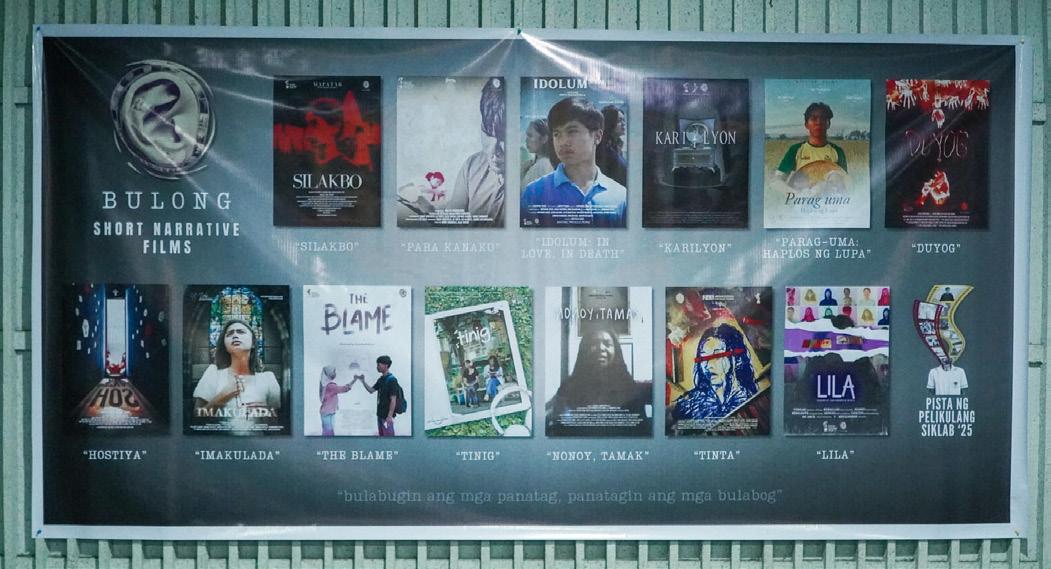
direksyon ni Vicente III Recla. Hinakot din nito ang mga parangal, kabilang ang Best in Music and Sound Design, Best in Cinematography, Best Supporting Actress, at Best Actor.
Samantala, ang pelikulang “Imakulada,” sa direksyon ni Nina Villasenda ay nagwagi bilang 2nd Best Film at Best Actress.
Tinanghal na 3rd Best Film ang “Karilyon,” sa direksyon ni Farrah Dela Calzada, at nagkamit ng mga parangal, kabilang ang Best Director at Best Editing.
Pinarangalan naman ang iba pang mga pelikula sa naturang pista, kabilang ang: “Tinta” nina PJ Tolenada at Kimberly Pombo bilang Best Trailer; “Duyog” nina Jeriel Gonzaga at Charles Lozarita bilang Best Poster; “Lila” ni Kenneth De Arce bilang “Special Jury Award”; at ang “Para Kanako”
by Jazmine Gubat
and Utilization, and the Perceived Linguistic Competence in the Academic Reading and Writing Skills of Grade 12 Students: A Quantitative Analysis.”
Other Siklab studies showcased in Paper Presentation (Student Category) included “Effectiveness of Student-Facilitated Seminar on the Cybersecurity and Cyber Ethics Knowledge and Perceived Behavior among Grade 7 Students in the Science Curriculum” as presented by Andrei Anthony Cuizon and “Green Mussels (Perna viridis) and Activated Carbon for Motorcycle Exhaust Emission Filters” as presented by Maxine Faye Leyva and Frances Daryelle Villan.
On the other hand, the Siklab studies featured in Poster Display (Student Category) were the following: “Basura Mo, Sagot Mo o Sagot Ko?: Perceptions of Local Residents on Coastal Pollution Scapegoating at Purok Saeg, Barangay Calumpang”; “Effectiveness of a Seminar in Enhancing the Plastic Recycling Literacy and Performance of Elementary Pupils”; and “Improving Fourth Grade Learners’ Multiplication Skills through Developed and Validated Instructional Learning Module on Vertical and Crosswise Vedic Multiplication Technique.”
In celebration of the 35th National Statistics Month, the 2nd GSC NSM research forum—organized by the City Statistics Committee of General Santos City, Philippine Statistics Authority (PSA) Sarangani, and City Population Management Office (CPMO), in partnership with the Office of the City Mayor of General Santos City, UST-General Santos, Department of Science and Technology (DOST), Department of Education (DepEd), and Commission
ni AZ Gata bilang Best Supporting Actor. Nilahukan ang PPS 2025 ng mga mag-aaral mula sa 11 STEM-Ganymede, 11 STEM-Titan, 11 STEMCallisto, 12 STEM-Euler, 12 STEM-Euclid, 12 STEM-Gauss, at 12 ABM-Ford.
Nagsisilbing plataporma ang taunang aktibidad na ito upang maipamalas ang kahusayan, pagkamalikhain, at pananaw ng kabataan sa mga isyung panlipunan sa pamamagitan ng sining ng pelikula.

on Higher Education (CHED)—served as a platform for local student and professional researchers to showcase their innovative and relevant research works, underscoring the importance of data-driven policies, collaboration, and continuous learning in promoting local and national progress.
The active participation and impressive accomplishments of Siklab researchers in the forum highlight the Senior High School Department’s unwavering commitment to fostering a culture of

Hizam Tuan (ABM 12-Ford), an 18-year-old student leader from Mindanao State University - General Santos Senior High School, received special recognition at the 2024 General Santos City Youth Achiever’s Award (GSCYAA).
In the In-School Youth - High School Category, Tuan was one of three nominated student leaders honored at the GSCYAA award ceremony held on December 23, 2024, at Veranza Mall.
According to Tuan, this marked a victory in his journey as a student leader after three months of rigorous preparation for his application for the award.
In a statement on his Facebook post, he thanked his teachers for nominating him for the award.
“I would like to thank the following people who made this possible. First is my nominator, the current Director of Mindanao State University - General Santos Senior High School Department, Ma’am Jorge. The following teachers were also instrumental in this endeavor: Sir Jaydee, Sir Algem, Sir Yancy, and Ma’am Cherry,” Tuan wrote.
Tuan also acknowledged the organizations he leads and is part of, which he said helped shape his abilities as a student leader, including the Siklab Supreme Student Government and the Interact Club of Rotary Dadiangas
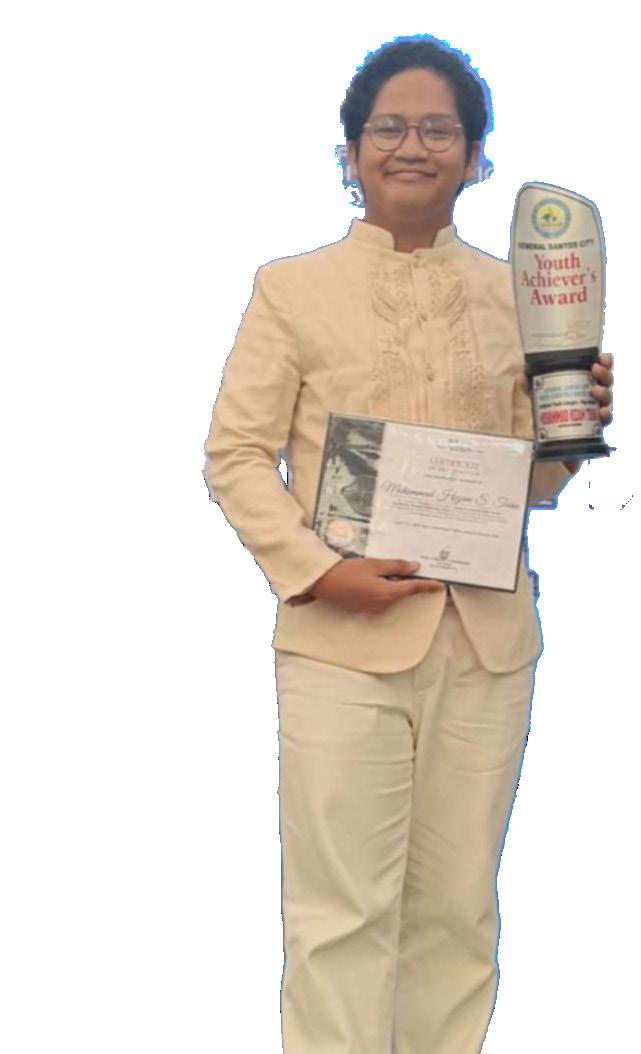
The competition, open to all elementary and high school students in General Santos City, accepted submissions from September 19 to November 20, 2024, centered on relevant events and issues of public concern.
The 17-year-old writer from 11 STEM-Titan, shared that his entry, “Titila Pa Ba?”, discusses the lingering concerns surrounding the Philippines’ consecutive typhoons, emphasizing the need to avoid romanticizing resilience, to demand government accountability, and to encourage public sensitivity.
“So, ‘Titila Pa Ba?’ is the title of my entry for the Creative Writing for Change Contest organized by the Water District because it encapsulates the whole narrative of my piece. ‘Titila Pa Ba?’, when translated into English, is ‘Will it ever stop?’ because it talks about the question that still remains over the consecutive typhoons that invaded our country. Almost lahat din ng perspectives regarding the typhoon kay na-encapsulate ko sa aking piece, like how we should not romanticize resilience, demanding accountability from the government leaders, and asking the people as well to be sensitive enough and sympathize in this tragic event,” he said.
Tanggo also noted that cramming his entry ultimately served a timely purpose, as November’s frequent storms and typhoons aligned with the issue he aimed to address in his piece.
“Actually, around September pa ata na-announce sa FB page ng GSC Water District ang contest. However, due to hectic schedules, it led me to cram my output. I believe it led me to a good cause man japon kay November was also the time na sunod-sunod gud ang mga bagyo na nag-agi in some parts of the Philippines. And that is something that I really wanted to talk about through my essay—to let the people know that we must act now and do something or else the effects of these typhoons will still not stop,” he affirmed.
Upon seeing the results, Tanggo expressed both shock and gratitude, crediting his success to God, family, friends, MSU-GenSan SHS, and Himig Isko, his student publication.
“I was in deep shock jud ato after seeing my name and entry engraved sa results. My feelings earlier were indeed fervid as a flame, ika pa nga sa Wicked, and up to now, I am still in complete awe and shock sa results ng contest. Even though considered as consolation prize lang ang entry ko, I’m still so happy po grabe. Nothing but love and gratitude to everyone who contributed a lot to my journey. First, to Himig Isko, my student publication and the backbone of my writing journey. Second, to MSU-GSC SHS, for letting me represent them wholeheartedly. Third, to my friends who constantly supported me. Fourth, to my family. And ultimately, to our Almighty God, the source of all wisdom. If it weren’t for His wisdom bestowed upon me to write this piece, none of this would have been possible,” he expressed.
Tanggo received his award on December 17, 2024, at the GSCWD Boardroom, in recognition of his outstanding contribution to the Creative Writing for Change Contest.

ni Aiya Colonia at Igeri Sulanting
Ipinamalas ni Mohammad Hizam Tuan ang kanyang husay sa mga patimpalak ng 35th National Statistics Month (NSM) 2024 sa pamamagitan ng pagkamit ng ikalawang gantimpala sa Impromptu Speech Contest at ikatlong gantimpala sa Statistics Quiz.
Alinsunod sa temang “Advancing Data Statistics Through Digital Transformation: A Road to an Empowered Nation,” nilalayon ng NSM, sa pangangasiwa ng Philippine Statistics Authority (PSA), na maitaguyod ang mahalagang papel ng estadistika at datos sa pag-unlad ng bansa, lalo na sa ilalim ng bagong yugto ng digital transformation.
Para kay Tuan, isang malaking karangalan ang maging kinatawan ng Mindanao State University-General Santos Senior High School sa naturang kompetisyon.

“I am very honored to be representing Siklab in this year’s National Statistics Month celebration after a long hiatus from joining any event in the celebration,” aniya.
Pagpapamalas ng angking talino
Ipinamalas ni Tuan ang kanyang talino at galing sa estadistika sa NSM Senior High School Statistics Quiz at matagumpay na nasungkit ang ikatlong gantimpala sa ginanap na kompetisyon sa Icon Venue and Suites noong Oktubre 18.
Sa ilalim ng patnubay ng kanyang tagapagsanay na si Bb. Juliemer Absalon, matagumpay niyang hinarap ang mga hamon ng kompetisyon laban sa mga mag-aaral mula sa iba’t ibang paaralan sa lungsod.
Galing sa pagtatalumpati
Ibinandera naman ni Tuan ang kanyang galing sa pagtatalumpati sa napiling paksa na “Digital Skills for Data-driven Economy,” matapos niyang magwagi ng ikalawang gantimpala sa 35th NSM Impromptu Speech Contest na ginanap sa Robinsons Place General Santos noong Oktubre 25.
Gayunpaman, hindi naging madali para sa kanya ang paghahanda sa patimpalak dahil kinailangan niyang pagsabayin ang pag-aaral para sa pagsusulit at pagtupad sa kanyang mga tungkulin bilang pangulo ng Supreme Student Government (SSG).
“I was really nervous for my impromptu speech since the preparation time before the competition was really small due to the fact that I had to study for the examinations, which finished just yesterday, as well as fulfill my commitments as the president of the SSG,” pahayag niya sa isang panayam.
Ngunit sa kabila nito, nahikayat pa rin umano si Tuan na magbigay ng kanyang pinakamahusay na pagtatanghal dahil sa suporta ng kanyang tagapagsanay na si Gng. Jorgelyn Rivera, SHS Directress.
“In spite of that, I was really pushed to do my best because of the support of my coach, who is also our department’s director, Ma’am Jorge. She gave me words of encouragement and motivation throughout the whole experience,” dagdag pa niya.
by Jezzu Quimosing
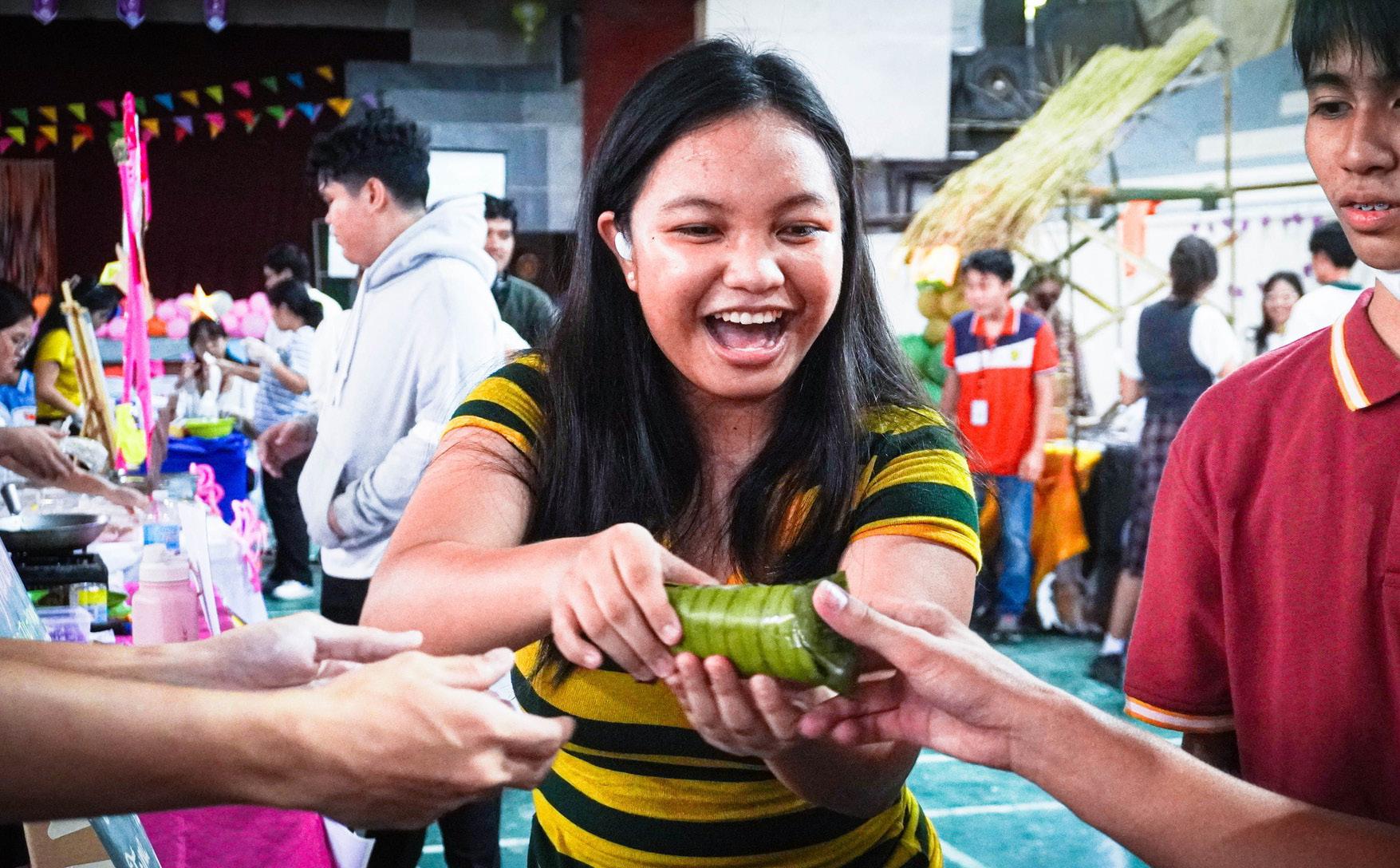
T
he Entrepreneurship Product Exhibit 2025 highlighted the creativity and innovation of Grade 12 Senior High School students, providing a platform to showcase their potential and take steps toward becoming future business leaders.
Held on January 8 at the University Gymnasium, this event marked the culmination of the Entrepreneurship subject, featuring food products from the ABM and HUMSS strands and innovative non-food products from the STEM strand.
Entrepreneurship adviser Mr. Abdul Silongan delivered the opening remarks, emphasizing entrepreneurial principles and inspiring students to pursue innovation.
Guest speaker Aldrin Mamon, owner of SG Farm, inspired students with a speech on developing a business mindset and shared practical advice for achieving entrepreneurial success.
The product exhibit featured colorful and interactive booths that captivated attention and showcased the students’ diverse ideas and hard work.
Leonald Gonzales, Overall Business Exhibit Head, concluded the event by applauding the students’ entrepreneurial spirit and hard work.
Product showcase
During their presentation, the Food category
participants captivated the audience with creative product advertisements.
Meanwhile, non-food category participants highlighted their innovative approaches to product development through engaging and informative presentations.
Judges Mr. Ralph Valdueza, Ms. Ayna Aguja, and Prof. Kenith Mirafuentes evaluated the booths and products based on creativity, innovation, and presentation.
Entrepreneurial excellence
Awards recognized outstanding efforts, with DaPack Co. winning Best Product Advertisement and AwAIR claiming Best in Poster.
ECOgon received Best Packaging in the NonFood category, while SavoraCreme earned Most Promising Young Entrepreneurs (Food), with PasTilawan and Cheese N’sCream taking second and third places, respectively.
AwAIR secured Most Promising Young Entrepreneurs (Non-Food), followed by MiniFlare in second place and DaPack Co. in third place.
Krispy Puffs won Most Innovative Product (Food), with Cheese N’sCream and PasTilawan finishing second and third.
MiniFlare topped the Most Innovative Product (Non-Food) category, followed by ECOgon in second place and AwAIR in third.
SavoraCreme and AwAIR stood out with
awards for Most Creative Booth and Presentation in their respective categories.
Student entrepreneurs’ sentiments
Charles Lotche, ICT Head of Buddy Co., described the journey as rewarding despite the hurdles.
“I believe, I speak for everyone when I say kapoy siya. Personally, we faced a huge challenge sa aming [manufacturing]. Despite that, we did our best to still pull it off. In addition, it was fulfilling to see yung products ng other groups kasi kaganda, kagaling, at kasarap. Makita talaga na nag-effort ang all for the exhibit. The whole preparation for this went on for months and I’d say everyone maximized their efforts for real. So props to everyone sa last hurrah for this first sem,” Lotche said.
Sharie Colano, Vice President of Marketing for MiniFlare, also shared her insights, expressing the unexpected success and enjoyment she experienced.
“To be honest, unprepared kami, rush pa ang pag-set up namin ng booth. At that point, we didn’t expect anything, we just wanted day to end. But, fate has other plans, it lets us bag 4 outstanding awards. As for my experience, I had a lot of fun kay parang nasa tindahan feels lang talaga kami ng mga friends namin and classmates na gakain and gabili ng food, then gachismis. Also, this exhibit actually says a lot kay dito mo talaga makita gaano ka creative, innovative, and the different interests of the students. All in all, it was fun kahit mainit sa loob ng gym. Something an event that is worth doing for,” Colano expressed.


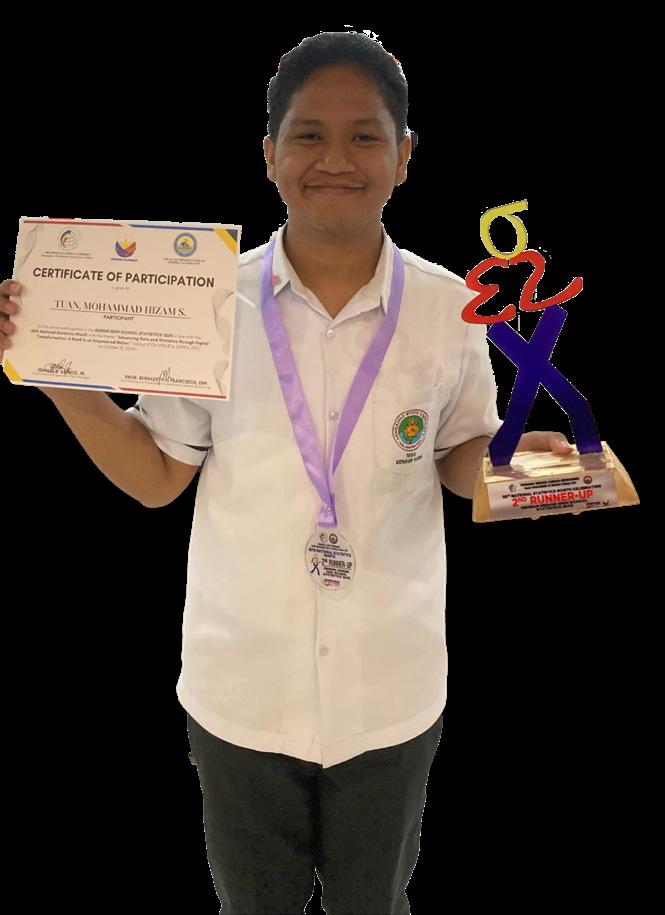
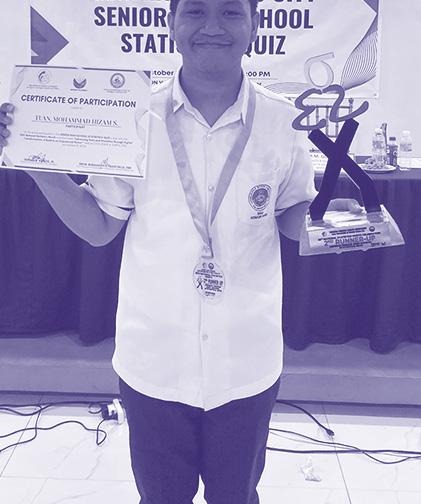

by Jett Tanggo
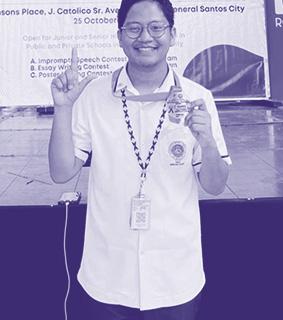
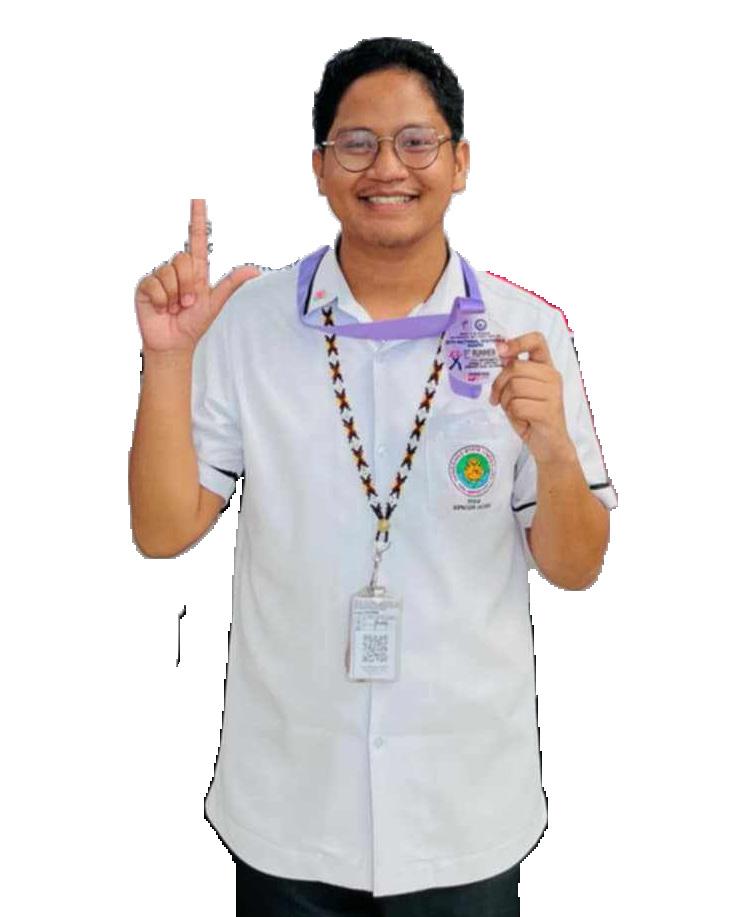
Mindanao State University-General Santos (MSU-GenSan) showcased its journalistic excellence as its Junior and Senior High School students won multiple awards at the Division Schools Press Conference (DSPC) 2025, with 13 students qualifying for the Regional Schools Press Conference (RSPC) 2025.
Jett Tanggo (11 STEM-Titan) secured first place, and Aifer Antopina (CETD) took fifth in News Writing (English), while Aiya Colonia (12 ABM-Ford) placed fourth and Leika Hermosilla (CETD) finished fifth in News Writing (Filipino), sweeping all four spots in both mediums.
Feevol Into (12 STEM-Euler) claimed first place in
Photojournalism (Filipino), while Anthony Cuizon (12 STEM-Euler) secured third and Erika Bague (CETD) took fourth in Photojournalism (English).
Princess Ramirez (CETD) took first place, while Sean Abranilla (12 STEM-Euler) secured second in Copyreading and Headline Writing (English).
Beige Ledesma (12 STEM-Euler) secured second place in Editorial Writing (Filipino), while Chloe Restauro (CETD) claimed third place in Editorial Writing (English).
Sharie Colano (12 STEM-Euclid) secured fifth in Science and Technology Writing (Filipino), while Phoebe Rodriguez (CETD) placed fifth in Feature Writing (Filipino).
The Online Publishing (Filipino) team, composed of Geoanna Boloso (11 STEM-Ganymede), Mikaella Daguro (11 STEM-Ganymede), Sophia Javellana (12 HUMSSComte), Ferline Tarrayo (CETD), and Into, secured second place.
Third place was earned by the Online Publishing (English) team, which included Rendex Quintinita (12 STEMEuler), Jeff Magbitang (CETD), Julia Molina (CETD), Rhiane Petorio (12 STEM-Euler), and Niall Dacuma (CETD).
Mishyra Almuete (CETD), Zedrick Concepcion (12 STEM-Euler), Kylla Cuyos (12 ABM-Ford), Ace Forro (12 STEM-Gauss), Felipe Palma (12 HUMSS-Comte), Kent Tirados (12 HUMSS-Comte), and Richner Valila (12 STEM-Euler) comprised the Radio Scriptwriting and Broadcasting team, which placed third.
Andrea Aban (12 STEM-Euler), Joille Delfin (12 STEMEuler), Jazmine Gubat (12 STEM-Euler), Charles Lotche
(12 STEM-Euler), Christine Mercado (12 ABM-Ford), Jezzu Quimosing (12 STEM-Euler), Antonia Suan (12 STEM-Euclid) won fourth place for Collaborative Desktop Publishing (English).
The DSPC 2025 took place on January 10-11 at Dadiangas West Central Elementary School, where campus journalists from General Santos City competed for the top five spots in individual events and the top spot in group events to qualify for the RSPC 2025.
The 13 writers are set to compete in the upcoming RSPC 2025 in February 25-28 in Isulan, Sultan Kudarat, alongside other writers from Region 12, vying for the top spot to advance to the National Schools Press Conference (NSPC) 2025 in April in Ilocos.



Asenior high school student from Mindanao State University spoke about her recent experience where she and her cousin were each charged a ₱100 fare from Dadiangas to Uhaw for the reason that they were “the only two passengers” and gasoline prices are currently high. Though it was against their will, they still paid the amount demanded of them. The student expressed that ₱100 was too expensive and too heavy for her weekly allowance. This is just one of many instances in the city where tricycle drivers have reportedly charged absurdly expensive fares.
In General Santos City, as per Section 120 of Ordinance 37, Series of 2018, the minimum fare for tricycles is set at ₱15 per passenger for the first four kilometers, with an additional fare of ₱1 per succeeding kilometer. In addition, discounts for students, senior citizens, and persons with disabilities still apply. Based on what the student had shared, her experience most definitely featured a violation of these laws. Though this issue is particularly heavy on students and daily commuters, it affects everyone who relies on public modes of transportation. Drivers should follow the policies and stop overcharging fares, given that students are already stressed and also deal with hardships.
Fare overcharging and shortchanging are punishable by law. Despite this, many tricycle drivers still violate the tariff. Overcharging, that is, charging more than what the law allows, is penalized with a ₱1,000 fine, as stated in the aforementioned city ordinance. Meanwhile, shortchanging, defined under the No Shortchanging Act of 2016 (Republic Act No. 10909) as “the act of giving insufficient or no change,” is penalized with a ₱500 fine or 3% of the day’s gross sales for the first offense and can lead to license revocation by the fourth offense. These rules are present to regulate fares and ensure they remain fair and reasonable. Thus, operators of public vehicles, especially tricycle drivers, should adhere to these policies to avoid causing inconvenience to their passengers and even to themselves.
Driving a tricycle every day is undoubtedly tiring work—traveling back and forth in the city, with the additional risks of traffic accidents and harsh weather conditions. It is indeed a noble job. But, even though drivers are only trying to make a living, doing so by exploiting students and commuters with overcharging is no way good. Charging excessive fares is unethical and only adds to the reason as to why they should stop.
Moreover, their difficult job and the struggles that come with it are not an excuse to exploit equally struggling students. Drivers must understand that commuters have their own share of financial burdens, particularly students with their education-related expenses. Charging
overpriced fares to daily commuters, of course, does not help. In today’s economy, we are facing the same struggles. We are on equal footing due to the inflation that we are facing and the taxes that we were imposed with, and tricycle drivers should not place more financial burden on their fellow citizens.
In recent years, our failing economy has caused widespread challenges in our daily lives—the prices of foods, necessities, and other products and services have all increased. In these conditions, securing a good source of income is crucial, especially for those who earn to support their family, which is the case for most tricycle drivers. Wherein drivers’ expenses are heavier when we consider the high price of gasoline. That is unfortunately why high gasoline prices are often used as their reason and excuse to overcharge commuters. Consequently, what we must do is help each other. Tricycle drivers must comply with fare policies to avoid causing further inconvenience and to steer themselves clear from legal repercussions. On the other hand, students and others who utilize the public transportation system should make themselves aware of this issue and educate themselves of the correct fare prices. Additionally, it is also part of their role as commuters to pay not less than what the law requires. The people and the authorities should collaborate in order to implement these policies and prevent more cases of violations from occurring. Most importantly, our government and national leaders should take action by addressing the bigger problem—our failing economy—which is where this issue, among countless others, is stemming from.
After all, the public transportation of General Santos City is part of its culture and identity. The city officially includes tricycles as one of the symbols of its pride and emblem and treasures them as a tourist attraction in themselves. It contributes to making our city unique and distinguished from others. Moreover, tricycles are also our most accessible and regular means of transportation. So, it would be ideal if these blue vehicles were associated with just and fair fares.
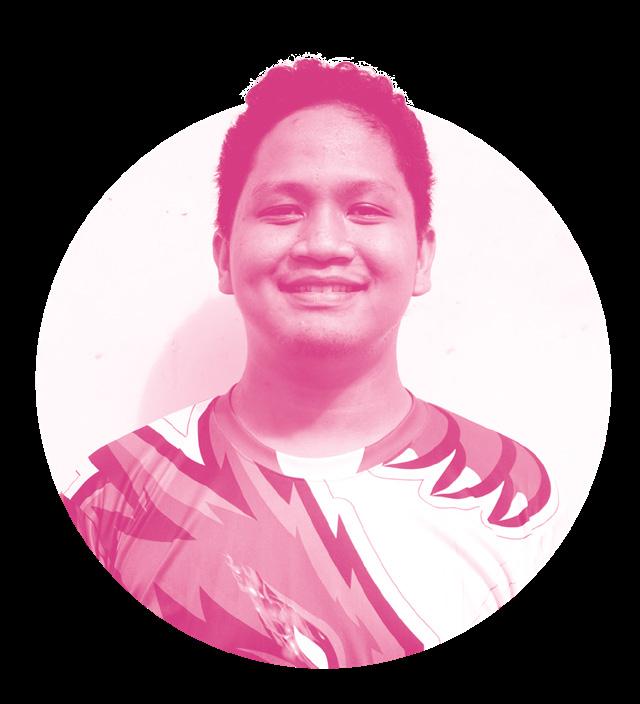
The underlying causes of this issue are deeply systemic. The rigid adherence to academic schedules, compounded by the increased number of activities crammed into one semester, creates an environment where burnout is inevitable. Institutions must reflect on whether the current pace truly serves the educational mission or merely produces stressed and fatigued students. Adjacently, we cannot neglect the leniency that most often a department provides in order
is
which shows why
important. We can always say that the schedule is messed up—however, we oftentimes forget how we can also do something about it, especially with the support of the administration currently. As the SSG President, I always remind my constituents to heed their concerns in the SikHelp: Student Help Desk to document and facilitate their grievances.
Addressing this issue requires a collective effort. Schools must consider extending deadlines, reducing overlapping requirements, and reconsidering the burden of ‘amutan.’ More importantly, they must treat students as individuals with unique challenges rather than a homogeneous group expected to meet uniform standards. It is an institutional responsibility I believe we can strengthen if guided and consultative talks are to be done. As we move forward to a new semester, let us remember that education is not just about producing grades but nurturing well-rounded individuals. To truly support students—institutions must prioritize mental health, offer flexibility, and foster an environment where every learner can thrive—not just survive.





by Beige Ledesma
Tatlong taon na ang lumipas mula noong nakaraang halalan —- tatlong taon na ang lumipas nang mabigyan ng kapangyarihan at malaking responsibilidad ang mga pangalang kasalukuyang nakaupo sa pwesto. Ngunit sa loob ng tatlong taon na ito, mayroon bang malaking pagbabagong nangyari sa ating bansa? At kung may pagbabago ngang naganap, ito ba ay nakapagpabuti o mas nagpahirap ng buhay ng isang ordinaryong mamamayang Pilipino?
Ang Pilipinas ay isang demokratikong bansa kaya mahalaga ang boses at boto ng bawat isa. Sa ating bansa, bawat anim na taon ang eleksyon para sa pangulo at bawat tatlong taon naman para sa iba pang posisyon tulad ng pagka senador. Ngayong nalalapit na ang 2025 senatorial elections, muling mabibigyang pansin ang mga kandidato na naglalayong makuha ang ating tiwala at boto. Bago pa man nagsimula ang taong ito, kaliwa’t kanan na ang mga pangangampanya at lantaran na ang pagpapabango ng mga kandidatong nagnanais ng posisyon sa senado.
Ngayong taon, inanunsyo ng Commission on Elections (COMELEC) na 66 sa daan-daang nagnanais tumakbo ang pumasa sa huling proseso ng pagsusuri. Kabilang sa mga ito ang mga kilalang pangalan tulad nina Tito Sotto, Bong Revilla, Imee Marcos, at Ronald “Bato” Dela Rosa. Sa kabila ng masusing proseso, kabilang na ang pagsusumite ng Certificate of Candidacy (COC) at background checks, hindi pa rin maiiwasan ang pag-usbong ng kontrobersya, lalo na kung may mga kandidatong may kaduda-dudang kredibilidad ang nakakalusot sa opisyal na listahan. Isa sa mga pinakaprominenteng halimbawa nito ay ang pag-apruba ng COMELEC sa kandidatura ni Apollo Quiboloy para sa Senado. Matagal nang kilala si Quiboloy dahil sa kanyang impluwensiya sa malaking bahagi ng Mindanao. Ngunit kamakailan lamang, naging mas kontrobersyal ang kanyang pangalan dahil sa pagkakasangkot sa iba’t ibang kaso, kabilang ang sex trafficking. Ang tinaguriang “Appointed Son of God” ay kabilang na sa listahan ng Wanted Persons ng Federal Bureau of Investigation (FBI). Matatandaang ni-raid ng halos 2,000 pulis ang kanyang compound, na nauwi sa kanyang tuluyang pagkakaaresto. Bagama’t patuloy na nililitis ang kanyang mga kaso, kasalukuyan siyang nangangampanya para sa pagka-senador. Bagama’t may kapangyarihan ang Commission on Elections (COMELEC) na magdiskwalipika ng mga kandidato, tila nananatili ang problema ng pagpasok sa halalan ng mga indibidwal na may kontrobersyal na background o criminal record. Isa sa mga pangunahing dahilan nito ay ang kakulangan ng COMELEC na mahigpit na ipatupad ang mga patakaran dahil sa impluwensiya ng pampulitikang presyur, mga legal na hamon, at limitadong mga mapagkukunan. Bukod dito, ang mabagal na sistema ng hustisya sa bansa ay nagiging malaking balakid sa pagkamit ng agarang hustisya, na nagiging dahilan upang makatakbo pa rin ang mga kandidatong may mga nakabinbing kaso. Ang ganitong sitwasyon ay lalong pinapalala ng laganap na korapsyon, pangingikil, at pagtanggap ng suhol mula sa mga makapangyarihang politiko. Ang mga kahinaang ito sa sistema ay hindi lamang nakasisira sa integridad ng halalan, kundi pati na rin sa tiwala ng publiko sa proseso ng eleksyon.
Habang papalapit ang eleksyon, parami nang parami ang mga survey na naglalayong sukatin ang pulso ng publiko tungkol sa mga kandidatong nais nilang ihalal. Ayon sa pinakabagong survey ng Pulse Asia, nangunguna si Erwin Tulfo na may 62% suporta, kasunod si Tito Sotto na may 59%. Bagama’t mahalaga ang ganitong mga datos upang maunawaan ang posibleng resulta ng halalan, hindi dapat ito maging tanging batayan ng ating desisyon. Ang popularidad ay hindi palaging nangangahulugan ng kakayahan, karanasan, o tapat na hangaring magsilbi. Ang mga pangalang nangunguna sa mga survey na ito ay hindi na bago para sa isang ordinaryong Pilipino tulad ko. Marami sa kanila ang nagmula sa mga political dynasties na matagal nang may kontrol sa sistema ng gobyerno ng bansa.
Sa kasalukuyang sistema ng pulitika sa bansa, napakahalaga ng papel na ginagampanan ng mga political dynasties at celebrity candidates. Ang mga prominenteng apelyido at tanyag na personalidad ay madalas nagiging malaking bentahe sa halalan. Para sa mga pamilyang politiko, ang pangalan ay nagsisilbing garantiya ng suporta mula sa mga tagasuporta ng kanilang angkan o rehiyon. Samantala, ang mga celebrity candidates naman ay umaani ng boto mula sa kanilang tagahanga, na madalas ay hindi ganap na nauunawaan ang kanilang kakayahan o plataporma. Ang ganitong kalakaran ay nagdudulot ng ilang suliranin sa sistema ng eleksyon. Una, nalilimitahan nito ang pagkakataon para sa mga kandidatong may tunay na kakayahan ngunit walang impluwensiya o yaman. Pangalawa, nagiging “popularity contest” ang eleksyon sa halip na seryosong pagsusuri ng kwalipikasyon at plataporma ng bawat kandidato. Pangatlo, napapanatili nito ang status quo kung saan ang yaman at impluwensiya ang nangingibabaw, imbis na ang tapat na pagsisilbi sa bayan.
Malaki rin ang epekto ng kakulangan sa voter education. Sa halip na pagtuunan ang track record o adbokasiya ng mga kandidato, maraming botante ang bumabase sa pangalan, hitsura, o kasikatan. Ang ganitong sitwasyon ay nagdudulot ng maling representasyon at, sa kalaunan, ay nagiging hadlang sa tunay na pagbabago.
Kasabay nito, mahalaga rin ang pagpapalawak ng media information literacy upang turuan ang mga botante kung paano suriin ang mga impormasyon na kanilang nakikita sa social media, telebisyon, o iba pang platform. Sa panahon ng fake news at disimpormasyon, madaling malinlang ang publiko, na nagreresulta sa maling pagpili ng mga lider. Ang pagkakaroon ng sapat na kaalaman sa wastong paggamit ng impormasyon ay magpapalakas sa kakayahan ng mga Pilipino na pumili ng mga kandidatong may kakayahan at integridad.
Bilang botante, tungkulin nating suriin ang track record at plataporma ng bawat kandidato. Huwag tayo magpadala





sa kasikatan o pangalan lang. Dapat tiyakin natin na may kakayahan ang mga kandidato na magbigay ng konkretong solusyon sa mga problema ng bansa. Isama natin sa ating pagsusuri ang kanilang mga nagawa at pananaw sa pagpapalakas ng sistema ng pamahalaan, kasama na ang pag-audit at pagpapabuti ng proseso ng COMELEC upang maiwasan ang mga butas sa ating electoral system.
Ang mga lider na ating ihahalal ay may malaking papel sa pagbuo ng mga batas, programa, at polisiya na direktang makakaapekto sa ating pang-araw-araw na buhay. Ang mga sistemang naisin natin ay dapat malinis at tapat, at bahagi tayo sa pagpapalaganap nito.



O
ctober 14, 2024 — Over 50 children and youth, 10 to 24 years old, representing various organizations, call for increased investment and support for child and youth-led community and school safety initiatives. The youth are not just victims but also play the role of catalysts in reshaping the future and advocating for knowledge that will be passed on for more generations to come. These young Filipinos are not mere bystanders, but active voices in many platforms where a disaster-free future is central to the conversation by bringing fresh perspectives, innovative ideas, and a deep understanding of local contexts.
Climate change has become the Philippines’ contemporary causing changes in rainfall patterns, droughts, sea level rise, and public health risks. Moreover, in 2024, the World Risk Index tagged the Philippines as the most disaster-prone country in the world. In general, young people don’t cause climate change, yet they will inherit a world riddled with its consequences. A future that only contains a bundle of countless calamities and risks affecting the entire population not just the youth. The youth ought to be both protagonists and beneficiaries in resilience agendas. With access to information and education, the youth are well-placed to lead innovation, disaster risk reduction, and local resilience action.
“Children and the youth are often seen merely as ‘victims’ of climate-induced disasters, however when given the space to participate in addressing the climate crisis, we can actively contribute and identify solutions. The future belongs to young people, and our voices deserve a place in shaping it today,” says Paul Daniel Serrano, 20, of Kabataang Resilient Network, a platform supported by UNICEF. The need for the youth’s voices to be heard is pivotal in acquiring new perspectives that will reshape the trajectory of the country’s inevitable downfall if they are recognized. Resilience programs can also contribute to providing knowledge to those who are ignorant or unaware of this everlasting matter.
Furthermore, according to the results of the U-Report Philippines poll by UNICEF, young people in the Philippines want to engage in resilience efforts actively. Despite challenges to youth participation in DRR—such as lack of
information, limited opportunities, and lack of support from adults, young people are still eager to contribute by educating peers and their communities, volunteering in preparedness activities, and participating in community planning. This not only shows that the youths themselves recognize the severity of the problem, but they are also willing to act upon it despite the challenges. Since they know to themselves that they are the only ones capable of acting upon it, mobilizing their selves for their future. However, various programs and organizations also exist that are committed to the youth’s resiliency regarding climate change. Realizing resilience in the context of empowering the next generation is where the Strengthening Institutions and Empowering Localities Against Disasters and Climate Change (SHIELD) Programme plays a critical role. As the climate and disaster resilience flagship programme in the Philippines, SHIELD harnesses the collective strength of communities to build resilience against disasters and climate change. Being led by the United Nations Development Programme (UNDP) in the Philippines, the programme prioritizes inclusivity, integrating gender equality, disability, and social inclusion across all its workstreams, ensuring that the specific needs and perspectives of young people, especially those from marginalized groups, are considered in every resiliencebuilding activity.
Additionally, through SHIELD’s programme, young people across the country became more active in resilience. In the provinces of Davao Oriental and Eastern Samar, and the Bangsamoro Autonomous Region in Muslim Mindanao, for instance, youth participation has been crucial in SHIELD’s resilience initiatives. The youth representatives have been actively involved in the programme, including capacity assessments and risk scenario development, which are essential in ensuring that their needs and priorities are reflected in local resilience planning and decisionmaking processes.
We must continue to engage with the youth and treat them not only as a vulnerable group but, more importantly, as allies, change-makers, community


and concerned groups for
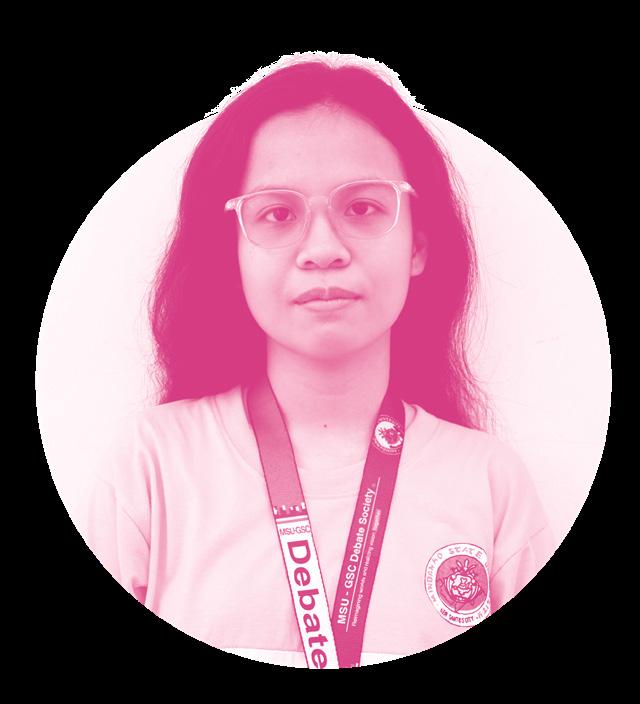
Detained pastor Apollo Quiboloy filed his certificate of candidacy for the Senate on October 8, 2024, through his lawyer, Mark Tolentino. He had initially accepted a nomination from the Workers’ and Peasants’ Party (WPP) but later withdrew to avoid potential internal disputes. Quiboloy is now running as an independent candidate, advocating for platforms he describes as “God-centered, Philippine-centered, and Filipino-centered.”
Public trust in democratic institutions relies on the perception that leaders should be individuals of integrity and serve as role models for those they represent. The COMELEC’S decision rests on a strict legal interpretation that does not take into account the broader implications of allowing an accused criminal to seek public office. Under the Section 12 (Disqualifications) of the Omnibus Election Code (Batas Pambansa Blg. 881) specifies that a running candidate may only be disqualified if they have been declared insane or incompetent by a competent authority, have been convicted by final judgment of a crime involving moral turpitude, or have been sentenced to more than 18 months in prison. While it is true that Quiboloy has not yet been convicted in a court of law, the mere fact that he is facing multiple criminal charges, some of which involve exploiting vulnerable individuals, already raises serious red flags about his suitability for the office.
The candidacy of Apollo Quiboloy for the Senate raises important questions about the ethical standards we apply to public officials in a democratic society. While the legal system operates on the presumption of innocence, should we not also scrutinize the moral character of those who seek to represent us? Quiboloy’s candidacy strikes at the heart of Philippine democracy, which is built on the principles of accountability, integrity, and the rule of law. Allowing a candidate with serious allegations against him to run for office risks enabling him to use his political platform to evade legal accountability. This situation prompts us to consider whether a clean slate of legal charges is truly sufficient as a standard for public officials, or if we should demand higher ethical and moral expectations from those who aspire to lead and serve the people. Government officials who run the country should be held to the highest standards of conduct, and those who seek to represent the people must be beyond reproach. If high standards
Ang pag-ibig ay mapagpalaya, ngunit bago pa man makamit ang kalayaang dala ng pag-ibig, iilang daagok muna ang kailangan lampasan. Ang bansang Thailand ay kilala bilang isa sa mga pinaka LGBTQIA+ friendly na bansa sa buong mundo. Sa bansang ito makikita ang totoong kahulugan ng pagkakaiba, pagtanggap, at sariling pagkakakilanlan pagdating sa kasarian. Gayunpaman, kahit bukas ang bansa sa usaping ito, kamakailan lamang naaprubahan ang same-sex marriage dito na isang mahalagang hakbang tungo sa tunay na pagkakapantay-pantay ng bawat isa.
Noong Enero 23, 2025, pormal na idineklara ng Thailand ang legalisasyon ng same-sex marriage. Naipasa ang batas sa parehong parliamentary houses noong Hunyo ng nakaraang taon at opisyal na inendorso ng Hari noong Setyembre. Sa ganitong hakbang, ang Thailand ay naging pangatlong bansa sa Asya—kasabay ng Nepal at Taiwan— at kauna-unahang bansa sa Southeast Asia na nag-legalize ng same-sex marriage. Ang batas na ito ay naging simbolo ng pagtanggap at pagkakapantay-pantay sa pagitan ng mga nagmamahalan, anuman ang kanilang kasarian.
Bagama’t ang same-sex marriage ay hindi nalalayo sa kasal ng isang babae at lalaki, nananatili itong kontrobersyal para sa ilan dahil sa mga isyung kaugnay ng relihiyon at paniniwala. Ayon sa iba, ang kasal ay nararapat lamang sa pagitan ng isang babae at lalaki, alinsunod sa kanilang pananaw na ito ang tamang alituntunin sa harap ng Diyos. Gayunpaman, hindi dapat limitahan ng opinyon ng iilan ang karapatan ng lahat ng tao na mahalin at makasama ang kanilang pinipiling kapareha, anuman ang kanilang kasarian.
Ang hakbang na ito ng Thailand ay isang mahalagang tagumpay sa pagsulong ng pagkakapantay-pantay sa larangan ng kasal. Sa wakas, ang mga LGBTQIA+ couples, na matagal nang naghihintay, ay magkakaroon ng pagkakataon na gawing legal ang kanilang pagsasama. Dati, kailangan nilang magpanggap na isang pamilya upang makagawa ng mga desisyon sa mga usaping medikal, real estate, at legal, ngunit dahil sa legalisasyon ng same-sex marriage, hindi na nila kailangang magpanggap. Nagbibigay ito ng proteksyon at mas malawak na oportunidad sa LGBTQIA+ couples at iba pang miyembro ng komunidad.
Ang legalisasyon
by Beige Ledesma
n December 27, 2024, the Philippine Commission on Elections (COMELEC) approved the candidacy of detained Pastor Apollo Quiboloy, leader of the Kingdom of Jesus Christ and a self-proclaimed “Appointed Son of God,” for the Senate in the 2025 elections. This decision has sparked outrage among Filipinos, who question how an accused criminal—facing multiple charges both locally and internationally, including human trafficking and sexual abuse—could be allowed to run for one of the highest public offices in the country. While the decision of the COMELEC is legally justified, it also represents a profound misstep that undermines the credibility of the electoral process, exposes glaring double standards, and even risks eroding the very essence of Philippine democracy.
apply to selecting student council members or business employees, then candidates for public office must meet the highest standards of integrity and capability.
On November 20, 2024, the Commission on Elections (Comelec) disqualified 117 senatorial aspirants for being nuisance candidates, following the recommendation of the poll body’s law department.
Under Section 69 of the Omnibus Election Code, a nuisance candidate is defined as someone who files a Certificate of Candidacy (COC) “to put the election process in mockery or disrepute, or to cause confusion among voters through name similarity, or under circumstances that clearly show the candidate has no genuine intention to run for office and aims to undermine the electorate’s true will.” Yet, despite facing serious legal charges, Quiboloy remains a legitimate contender. Here we see a double standard where those names who hold greater “influential” power, money, and connection over lesser-known aspirants. This only shows the darkest flaw of the Philippine political landscape which has long been ongoing through the years as only those with famous names only driven by self-serving interests are given the seat in the public office over those who genuinely want to serve the country and its people. If this is the message we send, what does it say about our expectations for public servants?
COMELEC’s decision only highlights these systematic issues that could open the doors for other aspiring candidates with questionable backgrounds to exploit legal loopholes and present themselves as legitimate leaders. This should serve as a wake-up call for electoral reform. The Philippine electoral system needs clearer and more stringent guidelines regarding the eligibility of candidates, especially those facing serious criminal charges.
Democracy is not a free-for-all; it requires safeguards to ensure that only the most capable and trustworthy individuals are entrusted with public office.
karapatan ng bawat isang mamamayan. Ang desisyong ito ay nagdadala rin ng mas malawak na pagtanggap at nagbubukas ito ng pintuan para sa mas malalim na pagunawa sa LGBTQIA+ community hindi lamang sa bansa, kundi pati na rin sa iba pang bahagi ng mundo.
Bukod sa usapin ng pagtanggap at karapatang pantao, ang legalisasyon ng same-sex marriage ay maaaring magbukas ng mga oportunidad para sa mas masaganang ekonomiya ng Thailand. Inaasahang tataas ang bilang ng mga turistang nais magpakasal, lalo na dahil sa magagandang tanawin at lugar na maaaring gawing perpektong lokasyon para sa mga seremonya. Ang pagiging isang mapagtanggap at payapang bansa ay maghihikayat ng mas maraming turista, partikular ang mga naghahanap ng lugar kung saan sila hindi makararanas ng diskriminasyon. Sa halip, makakaramdam sila ng pagtanggap at pagiging bahagi ng komunidad. Dadami rin ang mga bisitang nais maging malaya at magpahayag ng kanilang tunay na pagkatao nang walang takot o pangamba.
Kahit na legal na ang same-sex marriage sa Thailand, patuloy pa ring may mga taong kumukontra dito. Ang mga konserbatibong tao, na may makikitid na pananaw, ay patuloy na ipinipilit ang kanilang mga paniniwala na may impluwensya ng tradisyon at relihiyon sa ibang tao. Makikita ito sa maraming bansa, at isa na rito ang Pilipinas. Kaya naman, mabagal ang usapin tungkol sa kasarian at same-sex marriage sa bansa dahil sa konserbatibo at pagkarelihiyoso nitong kultura.
Bagamat nirerespeto ang mga paniniwalang ito, mahalagang tandaan na ang relihiyon at tradisyon ay hindi dapat magdikta ng mga batas na nilalayong protektahan at kilalanin ang pagkakakilanlan ng bawat isa. Hindi ipinipilit ng batas na ito na baguhin ang mga nakasanayan, ngunit hinihikayat nito ang respeto at pag-unawa sa bawat isa. Maaaring panatilihin ang kalayaan sa relihiyon habang
There must be a clear and transparent framework outlining the eligibility criteria for candidates, particularly those with ongoing legal cases or criminal charges. This should include advocating for laws that disqualify individuals facing serious criminal charges—such as corruption, human rights violations, or other crimes that undermine public trust—from running for office until their cases are resolved.
Furthermore, increased scrutiny should be applied to candidates with a history of legal or ethical issues. This could involve setting up a more rigorous vetting process, where the Comelec works with relevant law enforcement and judicial bodies to evaluate the legal standing of candidates before they are allowed to run. This will ensure that those who submit fraudulent or misleading documentation during the candidacy process who pose a threat to the integrity of the electoral process are filtered out early.
We must ensure that elections serve their true purpose: selecting individuals who are genuinely committed to serving the people, not merely leveraging power, money, or influence for personal gain. The true and greatest power lies in the hands of the Filipino people. All citizens eligible to vote should think comprehensively about who they would give the opportunity to serve them, and those must be leaders who uphold integrity and righteousness. Keep in mind to choose leaders based on truth and evidence, not on misinformation or fleeting popularity.
As of October 2024, an estimated 68 million Filipino voters are registered for the May 2025 midterm elections. Make every vote count for the change we yearn for today and the future we desire for tomorrow. As a country, we thirst so much for positive change, yet many of us refuse to be a driver for this change to manifest. So now, more than ever, the call is very clear: vote wisely, vote responsibly, and vote courageously.

Ito ang mga katagang binitawan ni Albay Rep. Joey Salceda kaugnay ng pananalasa ng bagyong Kristine sa Bicol. Ipinost niya ito sa kanyang Facebook account matapos maranasan ng Bicol ang isa sa maituturing nilang pinakamalalang baha sa nagdaang
isinusulong ang sekular na mga batas. Ang pagpasa ng batas na ito ay isang indikasyon ng pag-usbong ng isang progresibong lipunan sa Thailand at nawa’y tularan ito ng iba pang mga bansa.
Sa kabila ng mga hamon at kontrobersiya, ang Thailand ay patuloy na nagpapakita ng halimbawa ng pagtanggap at pagkakapantay-pantay. Ang legalisasyon ng samesex marriage ay isang malaking hakbang tungo sa pagkakaroon ng mas inklusibong lipunan, isang lipunang tumatanggap sa lahat ng tao anuman ang kanilang kasarian. Sa pag-apruba ng batas na ito, hindi lamang ang mga LGBTQIA+ couples ang makikinabang, kundi pati na rin ang buong komunidad na magpapakita ng tunay na diwa ng pagkakapantay-pantay at respeto. Ang hakbang ng Thailand ay nagsisilbing inspirasyon at paalala na ang pagbabago ay posible sa pamamagitan ng pag-unawa, pagtanggap, at pagrespeto sa pagkakaiba-iba ng bawat isa. Nawa’y magsilbing gabay ito para sa mga bansa at komunidad na nagsusumikap pa ring magsagawa ng mga hakbang para sa tunay na kalayaan at pagkakapantaypantay para sa lahat.


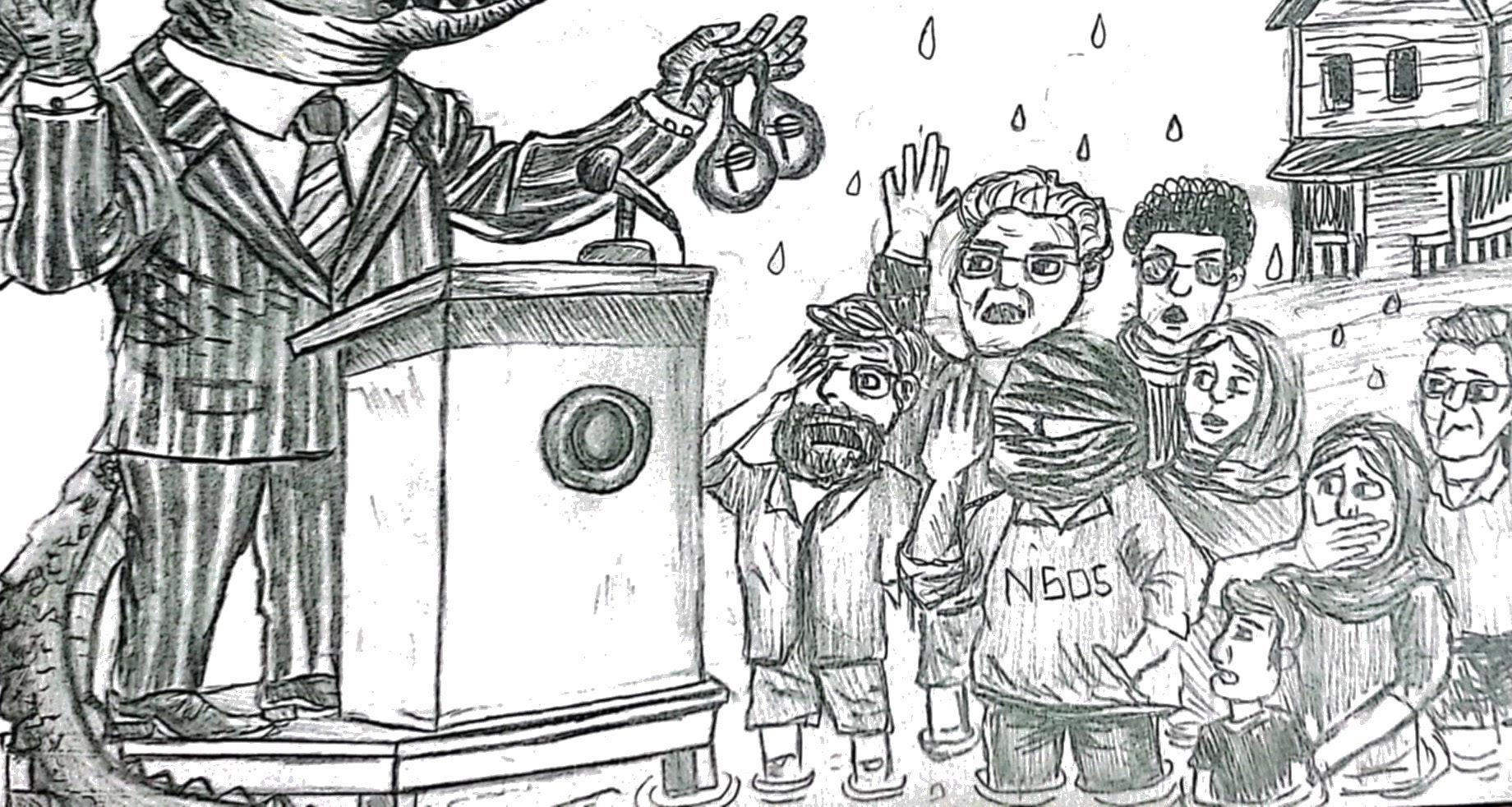
Tulong na kung saan ay hinahanap pa tulad ng pondo, at kung may tulong man na darating ay may kondisyon at kapalit naman nito. Subalit, kung gaano kalaki ang pondong nakalaan para rito ay ganoon din kaliit ang malinaw na epekto nito sa pagbawas ng pinsalang dulot ng bagyong Kristine.
Sa kabilang dako, kung ikukumpara, tila mas ginagampanan pa ng mga Non-governmental Organizations (NGOs) ang trabaho na dapat sana’y nasa kamay ng gobyerno. Tumutugon sa tawag ng nangangailangan kahit hindi nasusuklian ng ni-isang sentimo. Napakalinaw na kahit ganito ang nararanasan, may mga tao pa ring kayang magbigay ng higit, kahit walang posisyon at kapangyarihan. Subalit, meron din namang mga Pilipino na tila nagiging laro lamang ang lahat sa kanilang mga mata—parang mga tuso’t sakim na buwaya na ginagawang pagkakataon ang mga trahedya para sa sariling kapakinabangan. Hindi man kapani-paniwala, ginagamit pa ng ilang pulitiko ang mga kalamidad bilang paraan ng pangangampanya, tumutulong hindi dahil sa malasakit, kundi para sa boto. Mayroon ding mga tumutulong, ngunit may kapalit na bayad, na para bang kalakal ang malasakit.
Sa labas ng gobyerno, may mga Pilipino ring gumagawa ng mga biro sa social media tungkol sa bagyo, na tila normal na lamang ang ganitong trahedya para sa kanila. Isang uri ng pekeng katatagan na pilit na ipinamamalas ng mga Pilipino. Sapagkat ika nga nila, “Pinoy tayo, bagyo lang ‘yan.” Masakit man isipin na sa mata ng nakararami, ang mga ganitong pangyayari ay tila bahagi na lang ng karaniwang buhay dahil sa dalas ng mga kalamidad. Ngunit, kailanman ay hinding-hindi magiging normal ang pagkawala ng tahanan, ari-arian, at higit sa lahat, mga mahal sa buhay.
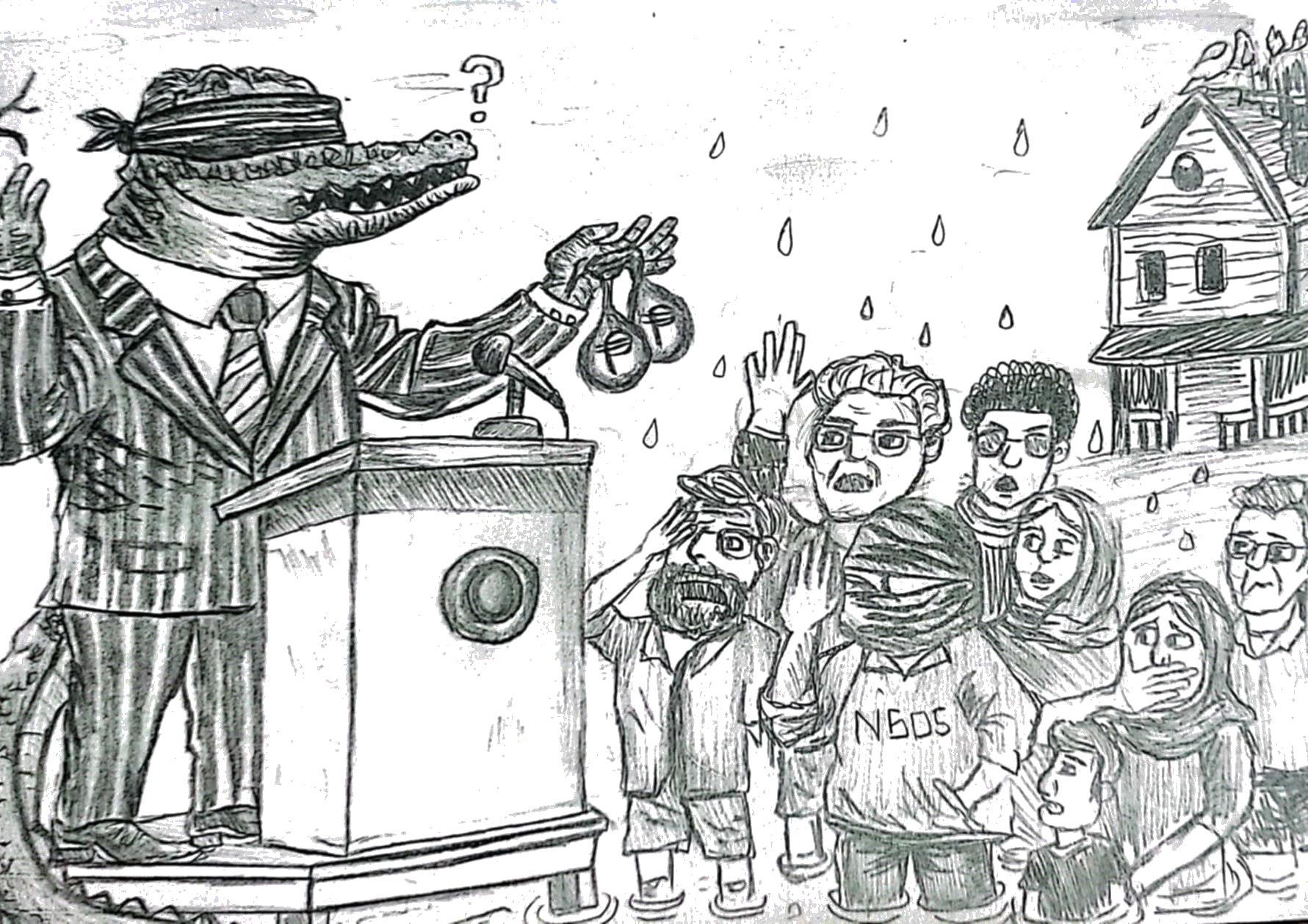
manlugmok
harapan ngunit nanghihila
Tangi sa roon, iisa lamang ang hangarin ng lahat— ang magkaroon ng pangmatagalang solusyon para sa mga kalamidad. Gumawa tayo ng solusyong hindi lamang nakatuon sa donasyon, pera, o katatagan kundi pati na rin sa pagsasagawa ng mga flood control projects, pagtatatag ng mas maagang mga babala kaugnay sa mga bagyo at paglikas, pagtitibay ng pagkagawa ng mga imprastraktura, at pagtatanim ng maraming puno upang ang kagubatan at kalikasan ay maibalik sa dati nitong anyo. Sa ganitong paraan, ang malaking pinsala ay maiiwasan at maraming buhay ang maisasalba. Hindi maaaring iasa natin ang lahat sa pamahalaan, dahil tayong mamamayan, bilang mga Pilipino ay malaki ang ating magagawa kung tayo’y magtutulungan at magkakaisa lamang.
and lamented at their act, expressing that they were trying to make us forget the blood of the heroes runs in our veins so they can replace it with the blood of slaves and let tyrants rule once more.
Aside from the removal of heroes’ portraits, there was a prior controversy involving BSP’s polymer banknotes. Critics and BSP officials had earlier flagged the country’s deal with Australia for the banknotes’ printing, saying that the agreement had not been made transparent to the public and was only disclosed between them. Meaning that they did not intend to disclose this information and was only for the sake of keeping transactions between them. Furthermore, Polymer banknotes are also more expensive due to their more sophisticated security features. On top of that, the local abaca industry had resisted the shift to polymer because they said it would cause job losses among farmers. Old banknotes were made from a mix of cotton and abaca fiber. Highlighting that countless farmers will have their livelihood taken from them and will have to work twice as hard to make a living.
The implication of the change in the newly made polymer banknotes not only brought about more criticism towards the government but also led to the removal of the livelihood of the farmers. This display of authority should only be wielded by those who truly care for the nation and its people. Moreover, educating our fellow citizens on Philippine politics and its history would prevent any more

Sa huli, hindi man lubusang magampanan nang maayos ng lingkod-bayan ang kanilang tungkulin, hindi ibig-sabihin na wala na rin tayong gagawin. Mahirap man ang mga pagsubok na inihahain ng mundo sa atin, ang katatagan ay nararapat na makita sa totoong pagmamalasakit sa kapwa at hindi sa mga pekeng pagtawa at pagsasawalang-bahala. Tandaan na hindi natin kailangang magtiis sa mga buwayang hindi nangangagat
MANILA, Philippines, December 11, 2024 — The national government’s decision to exclude PhilHealth from receiving any subsidy in the proposed 2025 National Budget, as revealed by Senator Grace Poe during an ambush interview at the Manila Hotel, has sparked significant public discourse. While some may interpret this as a disregard for the Sin Tax Law and the Universal Healthcare Act, a closer examination suggests a more prudent approach grounded in accountability and fiscal responsibility.
PhilHealth, with reserves reportedly amounting to ₱600 billion as of 2024, has faced repeated scrutiny for its questionable handling of public funds. Poe’s stance is clear: before requesting additional allocations, PhilHealth must first responsibly utilize its existing resources. Injecting more taxpayer money into an institution plagued by inefficiency and corruption risks worsening its problems rather than resolving them. A surplus of resources without proper oversight is a recipe for disaster—underscored by PhilHealth’s troubling history.
Moreover, a recent scandal exemplifies this pattern of financial mismanagement. Health reform advocate Dr. Tony Leachon took to social media to criticize the agency’s proposed ₱138 million allocation for a Christmas party, sparking public outrage. Although PhilHealth denied these allegations, stating that the budget was intended for its anniversary celebration in 2025, the optics of such extravagant spending remain troubling. At a time when many Filipinos struggle to access quality healthcare, such expenditures erode public trust and underscore the urgent need for stricter financial discipline.
However, Senator Risa Hontiveros has presented a counterpoint worth serious consideration. She argues that the refusal to allocate the mandated funds violates the provisions of both the Sin Tax Law (Republic Act No. 10351) and the Universal Health Care Act (Republic Act No. 11223). These laws stipulate that revenues from tobacco and alcohol excise taxes should be automatically appropriated to PhilHealth to expand coverage and improve access. Ignoring these provisions, according to Hontiveros, may threaten the continuity of health services and contradict the government’s commitment to universal healthcare.
This legal perspective introduces a valid concern. While enforcing accountability is necessary, it should not come at the cost of breaching the law or compromising healthcare delivery. Striking the right balance is crucial: the government must uphold statutory obligations while simultaneously demanding accountability from agencies that receive public funds.
Moreover, a two-track approach is essential. On one hand, Congress and the Department of Budget and Management (DBM) should consider conditional appropriations— allocating funds but withholding disbursement until PhilHealth meets clearly defined transparency and performance benchmarks. On the other hand, structural reforms within PhilHealth must be prioritized. This includes overhauling its governance model, instituting rigorous third-party audits, strengthening internal controls, and ensuring greater public access to performance reports and spending breakdowns.
Additionally, the Commission on Audit (COA) should be empowered to conduct real-time audits on PhilHealth’s transactions, not just year-end assessments. Introducing digital financial tracking systems and a public transparency dashboard could also be game-changers in restoring credibility.
Moving forward, policymakers must strike a balance between ensuring PhilHealth’s financial sustainability and protecting public funds from mismanagement. Reforming the agency’s governance structure, enhancing transparency, and implementing stricter auditing mechanisms should be top priorities. Only through comprehensive reforms can the government justify future subsidies and restore confidence in the institution tasked with safeguarding public health.
PhilHealth plays a vital role in the nation’s pursuit of universal healthcare. But with great responsibility must come even greater accountability. Reform must come not after failure, but before more funds are entrusted. Public confidence is not built through slogans or budget increases—it is earned through discipline, transparency, and results.
Ultimately, the absence of a PhilHealth subsidy in the 2025 budget, while contentious, represents a crucial step toward promoting integrity and responsible governance. Public funds must be managed with the utmost care, and those entrusted with their stewardship must be held to the highest standards. Only through such measures can we build a more efficient, equitable, and corruption-free healthcare system for all Filipinos.


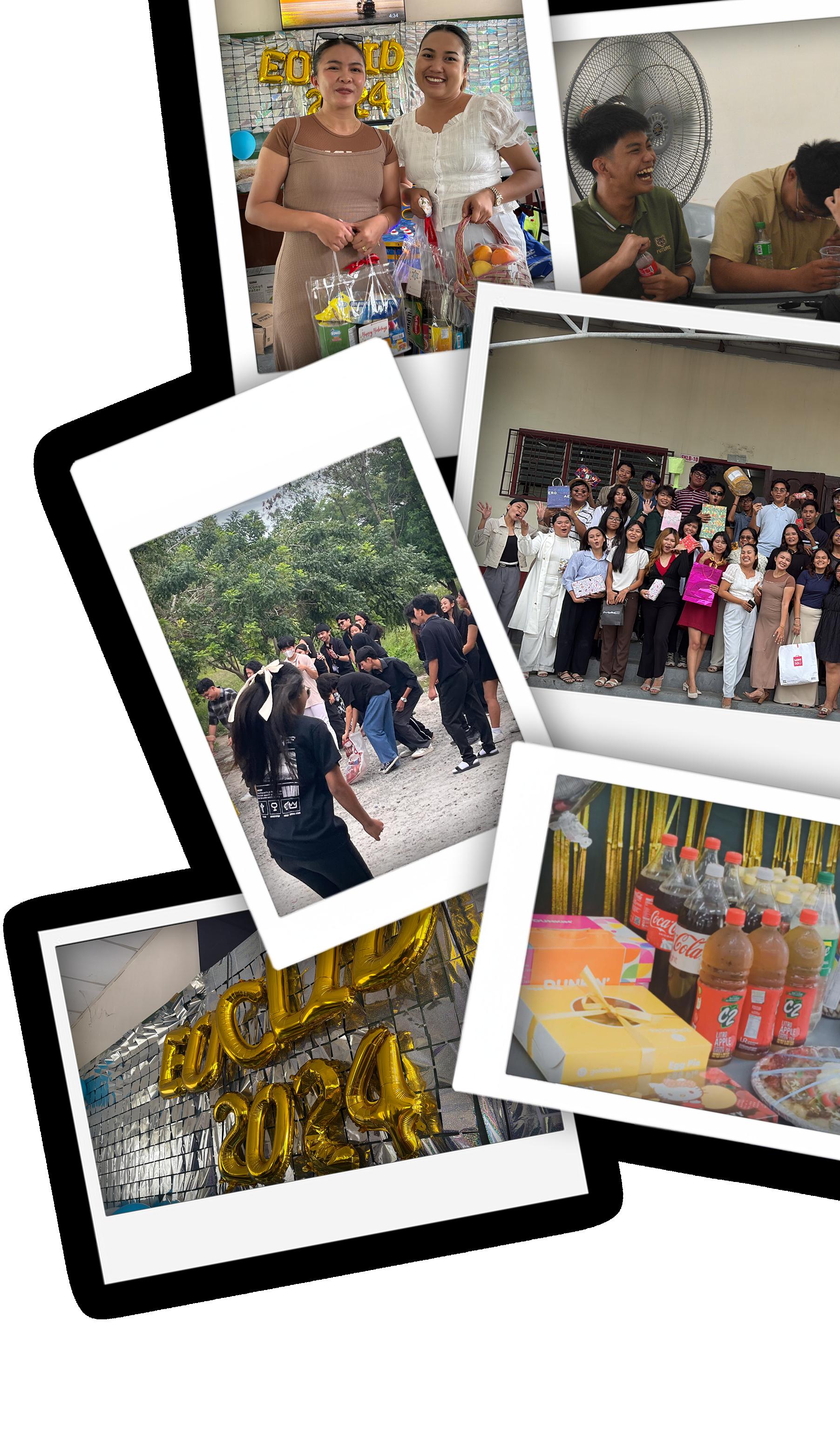
Since the development of the video and photograph, filmmakers have brought to various audiences the most candid of stories to the most bizarre pieces of fiction. It has captivated crowds through tastefully crafted writing, imagery, and music - all combining to produce films that offer new twists to beloved literature or create originals. For countless people around the globe, these have been a way to explore provocative themes and ideas. A way for everyone to experience walks of life so drastically different from their own, or even just to escape from the mundane and beneath the comforting blankets of cinema.
For the Siklab Legends, meanwhile, the Pista ng Pelikulang Siklab 2025 presented to them a muchawaited opportunity to revel in the wonders of cinema – to explore and experience the wonders of film as not just the audience but as filmmakers bringing life to the silver screen.
The Pista ng Pelikulang Siklab, is a film festival pioneered by Mr. Yancy D. Dizon, a filmmaker and faculty member of the MSU-GSC SHS department. The film festival explores various documentary and narrative films revolving around a particular theme. For this year of the festival, the main highlight of the film festival were the narrative films exclusively made by the SHS students, all revolving around the theme, “Bulong”, meaning “whisper” in Tagalog, and “medicine” in Hiligaynon.
The narrative works of the SHS students, a breath of fresh air from the documentaries produced by their predecessors, exhibited a diverse range of topics that sought to encapsulate the theme’s essence.

However, despite the ingenuity displayed by all the films belonging to the narrative category, “The Blame” of Umáum Productions, directed by Vicente Recla III, proved itself to be a cut above the rest as it received the Best Film award for the narrative category. The film revolves around Oliver, the young protagonist who is forced to confront
executed ending, the film also explores a dark reality faced by many people.
According to the film’s writer, Jamila Arian Alquiza, she “used the film as a gateway to spreading awareness about Violence Against Women and Children (VAWC)”. She also added that, like Oliver, “many people still face this harsh reality without knowing a way out”, and in a bid to escape from these difficult situations, their desperation often causes them to make questionable decisions. Furthermore, Alquiza revealed that Oliver’s character was inspired by Kim Dokja, the main protagonist of “Omniscient Reader’s Viewpoint”.

As for The Blame’s filming process, the production were no strangers to their fair share of hardships, especially when it came to the time available to them. In an interview with the director, Vicente Recla III, he attested that, “the schedules were tight and it was difficult maintaining good quality footage with such fast-paced production time.” Recla also goes on to say that because of time constraints and scheduling conflicts, the production had to film at a date “dangerously close to Christmas”, and to continue filming in a whole different location.
In spite of these challenges, Umáum Productions’ perseverance and dedication to putting out their craft to the world was what ultimately shone through and gave us a film that delivered artistically, as well as displaying themes of a dark reality. The same could be said for the other productions and unsung heroes whose contributions got the Pista ng Pelikulang Siklab up and running.
This is the magic of film.
To challenge long-standing ideas amidst internal and external setbacks. To enliven new concepts and themes to starry-eyed dreamers witnessing it. To project worlds once deemed unimaginable onto a screen for everyone to experience, and most of all to help realize a remedy in the face of the world’s adversities.

Stats, Oral Comm, Gen Bio, what else? A stack of notebooks and notes, a sophisticated scientific calculator, and highlighters in different colors are laid in front of me. The seconds on my Pomodoro timer run faster than my capacity to comprehend the lessons.
A breath ago, festivities of social events and breaks scented the air with laughter and joy. Stealthily an ominous cloud seemed to appear on my shoulders making me carry my academic burdens and pressure while shivering in its heaviness.
Statistics, chapter one, 9:00 PM. “The mean is the average of a set of values.” Average, that sends a pang in my chest. It reminds me of my scores, average,sometimes even lower, and never good enough to warrant appreciation. I learned all the terms and practiced all the problems, what else do I need to know?

by David Laxamana
Numbers have always been my easiest way of giving value to objects, things, and even people. Nines on my report card add to my worth. If I am not an academic achiever, what else will I be?
Oral Communication, chapter two, 11:00 PM. “Noise as a barrier is everywhere.” I give out a little laugh as I realize how truly this speaks to me. In everything I do, no matter how effortless it might seem, I have barriers to cross.
I read lines over and over again just to understand, in everything I do, I sabotage myself, I become the noise. I sit in front of my table, waiting for motivation to hit but instead of studying, I spend most of my time thinking and playing alternate realities where I fail.
Fresh from the long weekend, the Legends are thrusted back into the academic scene. Sitting through lectures, writing countless notes, and compiling numerous tasks in preparation for the lurking quarterly examination. This routine requires determination and great fortitude which can be taxing to the health of the students and cause constraints to specifically their mental health.
Under the tyranny of anticipating exams, students are left to drown in stress.
Motivation decreases while the guilt of doing nothing is fastly catching up.. With the craving of academic excellence, we tend to push our bodily limits. Allnighters, skipping meals, and isolation are just two of the most common ways we handle the urgency needed in learning.
Health is mostly affected, physicality being the front-runner. Anxiety is also exacerbated with the weight of pressure. A person can only go so far without breaking from the constricting demands; and not forgetting the responsibility of other tasks aside from academics.
General Biology, chapter three, 1:00 AM. “The cell is the most basic unit of life.” Most basic? – meaning, there’s more to life? There’s more to academics and stress. I and the anticipation of my future are more than the grades that haunt me today.

I don’t have to sacrifice anything, balance is highly due. I think it’s time to see the question “what else?” positively. Not as a measure of how much I forgot or how much I anticipate failure; but as the consideration of our happiness and well-being. Three chapters done, what else? Rest and sleep.


Sa pagsalubong sa bagong simula
Handa ka na bang yakapin ang bagong kabanata
Panibagong kabanatang magbubukas ng bagong pintuan
Kaibigang Isko, handa ka na ba?
Masisilayan sa muling pagkakataon Mga dating guro pati na rin mga bagong mukha
Dadaan sa kanilang istilo ng pagtuturo at ipapatong na mga gawain at pagsusulit
Kaibigang Isko, handa ka na bang kilalanin ang iyong mga guro?
Sa ayaw man o sa gusto natin
Wala pa ring magbabago sa mga mukha ng ating makasasalamuhang kaklase
Panibagong semestre na magbubukas ng panibagong lalakbayin
Kasama ang kabarkada’t kagrupo sa parehong silid
Kaibigang Isko, handa ka na bang makita silang muli?
Panibagong semestre, panibagong yugto
Haharap ulit tayo sa ating mga panibagong patong-patong na aralin at gawain
Didiskarte na naman muli para makaahon
Sa mga suliranin ng buhay iskolar ng bayan
Kaibigang Isko, handa ka na bang makipagpuksaan muli sa bagong semestre?
Hindi man natin ninanais na babalik na muli ang klase sa panibago nitong yugto
Sapagkat wala naman talaga tayong mapamimilian kundi harapin ito
Ngunit sa halip na mapuno ng pangamba
Harapin natin ang panibagong semestre nang may tatag at lakas ng loob
Kaibigang Isko, handa ka na bang salubungin ang ikalawang semestre?


Ito ang mga katagang pumapasok sa isip ko kapag naririnig ko ang katagang “Dyurnalismo”. Mga katagang ranas na ranas ko mula noong araw na unang sumabak ako sa entablado ng pagsusulat hanggang ngayon—kung saan tila tuyo na ang noo’y tintang walang sawang nagsusulat para sa katotohanan.
Elementarya pa lamang ako noong pinasok ko ang mundo ng pagsusulat. Unti-unting namulaklak na tila mga mirasol sa ilalim ng sikat ng araw ang aking talento sa pagsusulat buhat na rin ng gabay ng aking mga guro at dahil na rin sa hilig ko sa literature.
Hindi naglaon, nakatungtong ako sa mga entabladong hindi ko inakalang mahahakbangan ng aking mga paa—hindi lang isa, kundi dalawang beses. Sa mga panahong iyon, nakaramdam ang ng ‘di mapantayang tuwa at kaligayahan dahil sa wakas, may isang larangan na kung saan pakiramdam ko’y mas may kontrol ako sa buhay ko. Pakiramdam kung saan hindi ko ramdam ang pagdududa. Isang pakiramdam na mararamdaman ko lang pala sa loob ng madaling panahon.
Nagsimula ang lahat noong pandemya. Hindi man gaanong kalala ang “burn out” na nangyari sa akin ngunit sapat na iyon upang mabawasan ang dilaab ng ‘di maapulang apoy sa aking kalooban. Unti-unting nawalan ako ng gana sa pagsusulat at hindi naglaon, nakita ko na lamang ang aking sariling puyat na puyat at pagod na pagod kakabasa, at kakasulat ng animo’y mga bulubundukin ng mga takdang aralin, at mga bababasahin na hindi ko binasa dahil sa pagiging “crammer” ko kumbaga. Habang tumatagal ang panahon, ang plumang dating kay higpit kung hawakan ko’y untiunti ko nang hinayaang kumalas mula sa aking mga kamay. Ang dating plumang mayaman sa tinta ay unti-unti nang natutuyo at halos hindi na dumadaan sa papel ng aking isipan.
Pinilit ko ang aking sarili na huwag hayaang pabayaan ang noo’y mayabong nang puno ng dyurnalismo na nakatanim sa aking isipan ngunit ano pang silbi ng pagyabong nito kung halos hindi ko ito dinidiligan at kung halimbawa ma’y aking diligan ay asido ang nadidilig rito? Sabi nga naman nila, “Hindi kailanman magiging maganda ang pinilit na mga bagay”—tama nga sila. Dahil sa pagpilit kong ibalik ang nakaraan, unti-unti ring lumalayo ang loob ko sa pagsusulat.

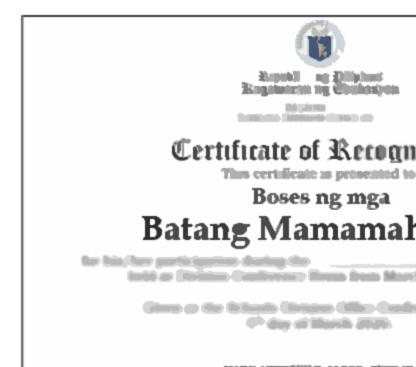


mamamahayag. Ito ay isang paalala na ang boses ng kabataan ay mahalaga, at na ang bawat isa sa atin ay may kakayahang gumawa ng pagbabago sa mundo. Ngayon, habang binabalikan natin ang mga alaalang iyon, nais nating purihin ang bawat kalahok ng DSPC. Kayo ang mga tunay na bayani ng ating panahon. Kayo ang mga boses ng inyong henerasyon. At kayo ang mga magiging tagapagtaguyod ng katotohanan sa hinaharap.
pagbabahagi ng mga inaangkin nilang talento sa mundo. Ngunit sa likod ng kabang iyon, ay ang isang matinding pagnanasa na matuto, lumago, at mag-iwan ng marka. Ang bawat batang mamamahayag ay ang mga tagapagtaguyod ng katotohanan, mga boses ng kanilang henerasyon, at mga inspirasyon para sa mga susunod pang mga batang manunulat.
Ngunit, isang tanong ang tumatak sa aking isipan, sino nga ba ang mga tunay na nagtagumpay sa DSPC? Ito man ay patimpalak, ngunit ang mga aral at karanasan na natamo ng bawat batang mamahayag ay tiyak na nakatatak sa kanilang mga puso. Ngunit higit pa sa mga tropeo at medalya, ang tunay na premyo ay ang pagkakataong tuklasin ang kanilang potensyal at ang pag-aapoy ng kanilang puso sa paghahahangad ng katotohanan.
Ang DSPC ay hindi lamang isang patimpalak o pagalingan; ito rin ay nagsisilbing inspirasyon para sa mga susunod pang henerasyon ng mga batang
Mabuhay ang mga batang mamamahayag!




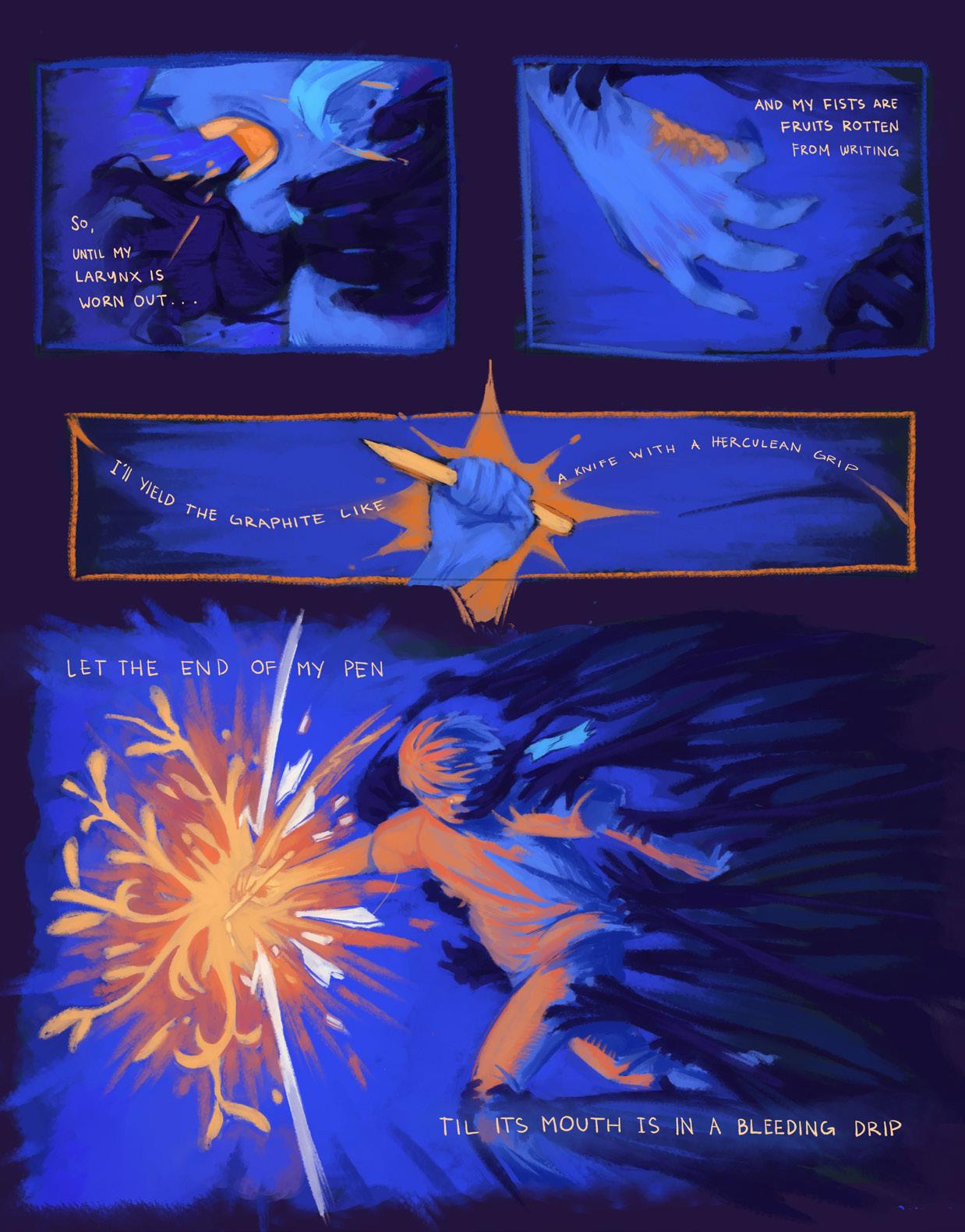


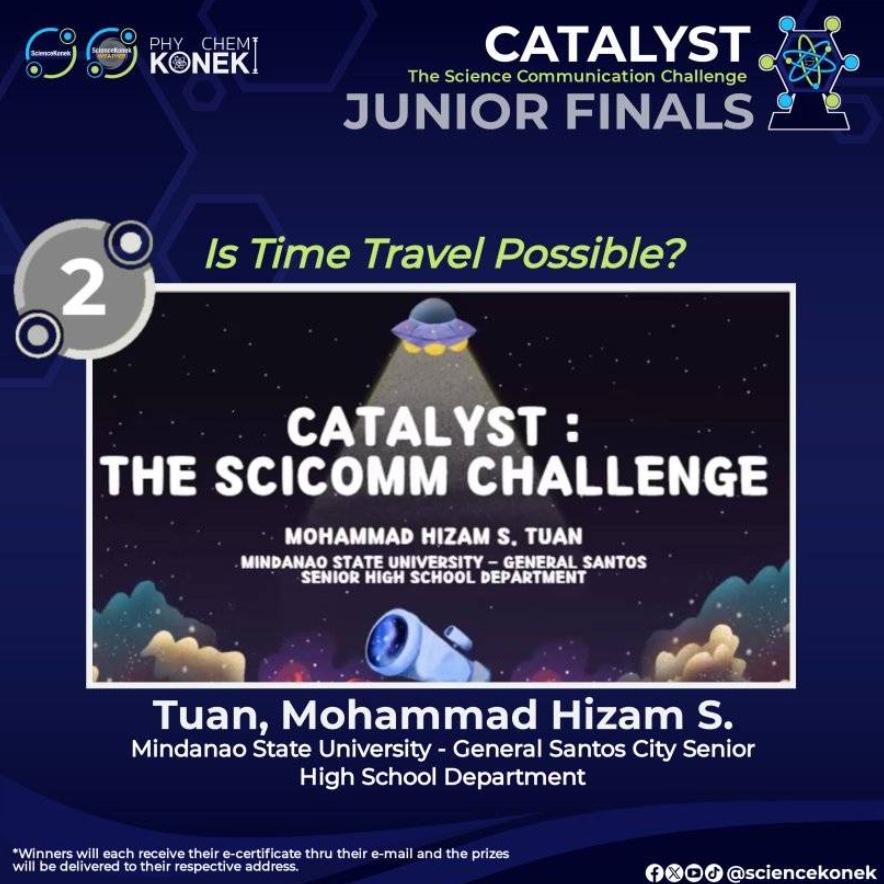
ng samu’t-saring tanong.
Sa modernong panahon na mayroon tayo ay mas nagkakaroon na ng sagot ang mga tanong natin patungkol sa mga bagay na kataka-taka at ito ay nakaiintriga ng interes ng kabataan ngayon. Kamakailan lang ay ginanap ang Catalyst: The Science Communication Challenge, isang patimpalak ng Science Konek sa kanilang ika-tatlong anibersaryo kung saan nabigyan ng pagkakataon ang mga kabataan na maghain ng konseptong papel patungkol sa kanilang piniling konsepto ng siyensya. Ang Science Konek ay isang organisasyon na may layuning pagtibayin ang koneksyon ng siyensya at ng mamamayan sa pamamagitan ng masayahing pamamaraan. Sa kanilang pagdadaos ng patimpalak noong Disyembre 21, 2024 na ginanap sa platapormang Zoom, dinaluhan ito ng anim na maswerteng kabataan na nanalo laban sa 33 na kalahok sa iba’t-ibang bahagi ng Pilipinas.
Ang naturang patimpalak ay pinalolooban ng dalawang katergorya, ang Junior at Senior Category. Sa Junior na kategorya ay nakamit ni Mohammed Hizam S. Tuan, isang mag-aaral ng Pamantasang Mindanao ng Senior High School Department ang 1st runner-up sa kanyang konseptong papel na pinamagatang “Is Time Travel Possible?”.
Ayon pa nga kay Tuan patungkol sa kanyang karanasan sa patimpalak,“The brief for the finals round was to discuss a common misconception that can be debunked through science. For my topic, I chose to explore whether time travel is possible, particularly time travel to the past. This subject interests me because time travel hasn’t been conclusively proven as a
of Thermodynamics (i.e. the second law). Looking back, I’m glad I chose this topic, even though it wasn’t the one I originally planned to present for the finals.”
Dagdag niya pa rito,
“As an ABM student, joining this competition was a paradigm shift for me. People might not expect someone from my strand to have a deep interest in science, but I’m happy I was able to showcase my love for it through this platform. Representing our institution in a national competition alongside students from across the Philippines was a meaningful experience. It was also insightful to learn about the topics they brought to light. Despite the limited preparation, I had a great time throughout the competition.”
Ang pagdadaos ng mga patimpalak na tulad nito ay isang paraan upang magkaroon pa ng malakas na ugnayan at interes ang mga mamamayan sa larangan ng siyensya, lalong-lalo na ang mga kabataan. Ito ay nagbibigay pa ng rason para sa mas progresibong pag-unlad sa larangan ng komunikasyon at siyensya. Ngayon,

SAng Philippine Junior Data Science Challenge 2024 ay isang pagligsahan patungkol sa pagrerepresenta ng samu’t-saring konsepto at ideya patungkol sa mga napapanahonh isyu ng lipunang. Ayon kay Aban, ang kanilang konesepto ay tinatawag na RAPID o nangangahulugang Registration Analysis for Pedestrian and Infrastructure Development na tinutugunan ang problema ng trapiko sa bansa.
Dagdag pa nila, ang RAPID ay isang proyekto na may layuning magbigay ng regional vehicle data analysis na nagbibigay kakayahan sa mga tao na magkaroon ng kaalaman kung iilang mga sasakyan ang nakarehistro na pampubliko at pang-pribado sa naturang lugar o rehiyon. Ang RAPID ay madaling nagagamit dahil ito accessible online.
Sa huli, layunin ng RAPID ang pagbutihing iunlad ang transportasyon at sitwasyon ng mga kalye at daanan sa ating lipunang. Ika nga ni Aban, mas madali itong maunawaan bilang proyektong tumutugon sa “sustainable urban mobility”.
Tunay ngang magaling, inobatibo, kritikal sa pagiisap, at may malawak na imahinasyon na ang bawat isa sa atin. Dahil sa Philippine Junior Data Science Challenge 2024, nagiging Daan ito upang mas pasiklabin pa ang interes ng bawat kabataang Pilipino. Malay natin, ang iilan sa mga konsepto nito ay lubos na magiging sulosyon ng lipunan!
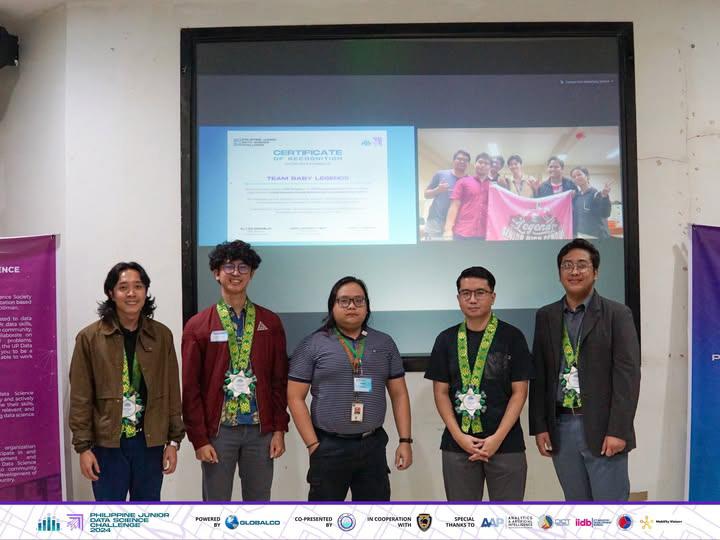
In Philippine mythology, a diwata or fairy is a revered nature spirit believed to protect and oversee elements of the natural world, such as mountains and forests. On October 29, 2019, a technological steward bearing the name “Diwata-2” or “Diwata-2B”, was launched into space for capturing satellite images. Originally designed for a five-year mission, it has surpassed expectations, marking its sixth year in orbit in 2024—extending its mission as the country’s modern-day guardian of nature.
Diwata-2 is the first satellite developed under the STAMINA4Space program, a successor to the PHLMicrosat program. It is the product of a successful collaboration between the University of the Philippines Diliman, the Department of Science and Technology, and Japan’s Tohoku and Hokkaido Universities.

Building upon the success of its predecessor, Diwata-1—the first Filipino microsatellite launched in 2016—Diwata-2 comes with key upgrades. These include an amateur radio payload for disaster communication, a high-precision telescope for postdisaster assessment, and a Spaceborne Multispectral Imager (SMI) for environmental monitoring. Positioned in a Sun-synchronous orbit, the satellite ensures it passes over the same location on Earth every 16 days, enhancing its ability to provide consistent and reliable data. Furthermore, it features advanced cameras for precise environmental assessments, including damage from natural calamities, as well as deployable solar panels that power its payloads.
Moreover, its success also serves as a testament to the robustness of its design and the dedication of Filipino scientists behind it, incentivizing the government and inspiring a new generation of innovators to push the boundaries of space technology in the country. This demonstrates that Filipinos have the expertise and capacity to build and operate advanced space technology, a notion previously deemed unattainable for developing nations.
As Diwata-2 continues its mission in orbit, it symbolizes a new era of scientific progress and national pride, following the footsteps of Diwata-1. True to its name, it serves as the Philippines’ modern-day diwata guarding the natural world from above while inspiring future generations to reach new heights in space exploration.

I
Their
It emphasized the fundamentals of robotic systems, programming, and their real-world applications.
The event provided hands-on experience, allowing students to apply theoretical knowledge in practical scenarios essential for navigating future challenges in the field of technology.
In addition to students from Mindanao State University – General Santos City, students from Alabel National Science High School and


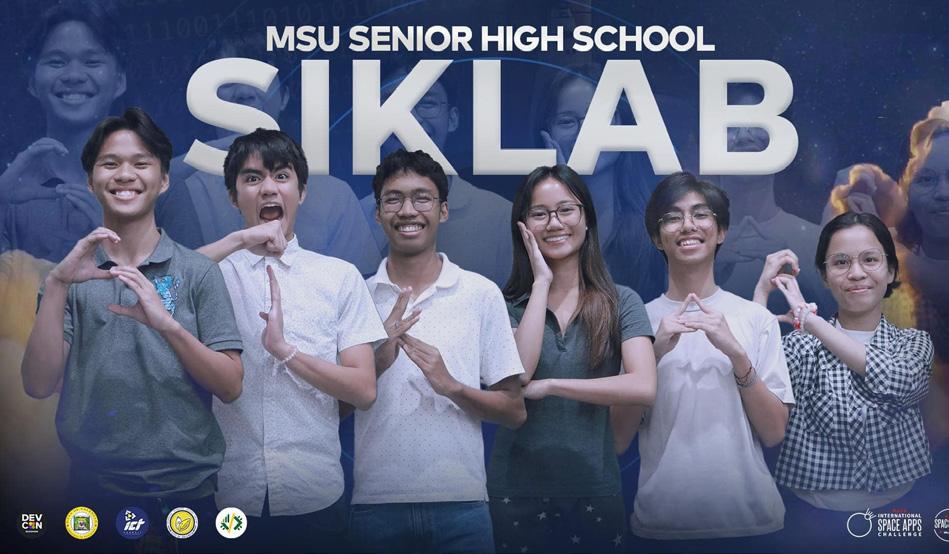

On a scale of 1 to 10, how would you rate eating plastic for dinner? While it may seem absurd, studies suggest we’re already in the presence of pervasive plastic pollution.
ultimately, our food.
Marine scientist Dr. Deo Florence Onda, a microbial oceanographer from the Marine Science Institute, emphasized that microplastics pose even greater risks to smaller organisms.
“Ang microplastics kasi, mas malaki ang epekto niya sa mas maliliit na organismo,” Onda explained.
The scientist warned that fish consuming microplastics experience stunted growth, which disrupts ecosystems and affects fisherfolk livelihoods. However, research on how microplastics impact human health remains limited.

“Kung ‘yung maliliit na isda ay naapektuhan at hindi na nila kayang lumaki dahil sa microplastics, anong mangyayari? Ano ‘yung aanihin natin? Kulang pa rin tayo sa pag-aaral kung ano ‘yung overall impact niya sa health ng tao,” Onda added.
Marybeth Banda, one of the study’s researchers, pointed out another alarming factor: the chemical nature of microplastics allows them to attract and accumulate toxic substances. This means that consuming contaminated seafood may expose people to even more harmful chemicals.
As a response, NRCP researchers are calling for a harmonized protocol to assess the toxicity threshold of microplastics in seafood. According to the DOST, simply detecting and counting microplastics is not enough—we must understand their true risks. With plastic pollution worsening, the question remains: How much more plastic until we protect our plates—our place—our planet?
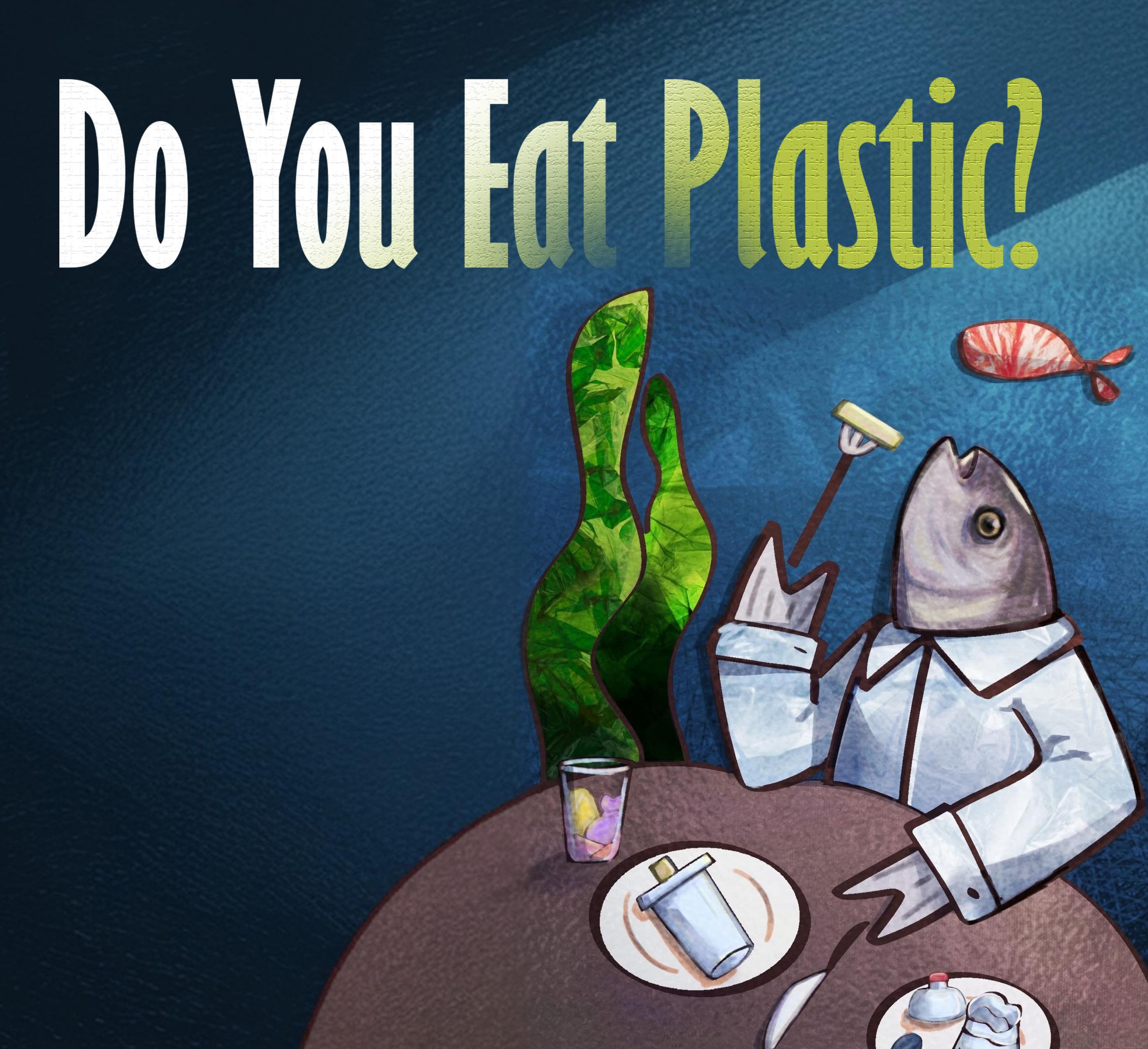

They shine in hues of purple, signaling readiness, before being fermented, extracted, and purified.
From these humble beginnings arise tools for daily life: bags, containers, objects once tied to permanence but now fleeting, transient. The process, though complex, has a simple truth: what is made from the Earth can return to it, gently, without harm. Plastic, long seen as a suffocating presence, learns to breathe alongside the Earth it once burdened.
“Ngayon po binigyan po kami ng opportunity ng DOST to continue scaling up,” Ventura said, expressing gratitude for the years of support that has made this innovation possible.
Years of research, backed by the Department of Science and Technology, rejoice in this quiet triumph. Yet the journey is far from over. Scaling up this repertoire of bacteria and science requires persistence. Dr. Ventura speaks of opportunities — not just for the lab, but for the world. A chance to rethink how we live, how we consume, and how we create.
by David Laxamana
Mt. Apo, a treasure trove of biodiversity, has revealed yet another gem—a “blue-ming” discovery that’s as delightful as it is diverse. With its plump, navy-blue appearance and sweet yet tarty flavor, who wouldn’t seize the chance to glimpse a blueberry while climbing the summit of this lush mountain?
A new species of blueberry plant, Vaccinium fallax, has been discovered at the Mt. Apo Geopark in Davao del Sur. According to the Department of Environment and Natural Resources-Davao (DENR-11), the newly described plant is a shrub that ranges in height from an average two-year-old child at minimum to that of an adult human at maximum. This micro-endemic blueberry is indeed a once-in-a-blue-moon find; it can only be found within a small portion of Mt. Apo. It grows particularly in open areas near the summit, growing on rhyolite boulders surrounding the sulfur vents.
But don’t be fooled! V. fallax closely resembles V. myrtoides, the wild berries often snacked on by trekkers and mountaineers along Mt. Apo’s boulder face. In fact, the name fallax, derived from the Latin word for “deceptive,” highlights this resemblance—a reason why several years passed before it was ascertained to be
So, what sets V.
remains: how many more natural treasures are hidden within the slopes of Mt. Apo, waiting to be discovered?

itself. Sediments, water, and waste. Over 300 strains of bacteria, each a silent artist, await their turn to create. Under the guidance of Dr. Jey-r Ventura, these microorganisms transform, their innate properties remodeled into the form of pliable, degradable plastic.
This bioplastic does not demand the impossible. It does not ask you to abandon your habits, only to embrace change in the materials that sustain them. It stands as a reminder that solutions can emerge from the smallest sources and that even bacteria, can rewrite the narrative of waste.
For
Filipino scientists, led by experts from the University of the Philippines Diliman and the Department of Agriculture’s Philippine Carabao Center, embarked on a quest to uncover the Carabao’s true nature. What they found was more profound than they had imagined.
Published in the Philippine Journal of Science, the study reveals that the Philippine Carabao, known scientifically as Bubalus kerabau Fitzinger, 1860, is not merely a variant of the riverine buffalo but a separate species entirely. This distinction is rooted in the very code of life: the DNA that defines each creature. By examining the genetic sequences of both swamp and riverine buffaloes, the researchers discovered significant differences in their chromosomal makeup: the Carabao possesses 48 chromosomes, while its riverine counterpart carries 50.
In the Language of Chromosomes Chromosomes are the ancient scrolls of
nature, bearing the blueprints that shape every living being. For the Carabao, these scrolls tell a story of separation from its riverine kin, a divergence that occurred millennia ago. The differences in chromosome count signify barriers that prevent these creatures from merging into one lineage. This distinction is more than just a number; it speaks to a deeper, evolutionary journey that has shaped the Carabao into its own unique form.
This work is proof to the power of patience and precision, as they unraveled the nuances of genetic material to reveal the Carabao’s singular identity. Dr. Ian Kendrich Fontanilla and Dr. Lilian Villamor, among others, led this scientific endeavor, using advanced molecular tools to decode the DNA that flows through the veins of these animals. Their findings confirm what the land and farmers have long known intuitively, that the Carabao stands apart, a creature molded by its environment and history.
Born of Soil, Shaped by Science
A Carabao is more than just an animal; it is an enduring symbol of Filipino culture. For generations, it has been the farmer’s steadfast companion, its hooves carving paths through flooded rice fields and its strength turning the soil for new crops. Now, with its newfound recognition as a distinct species, the Carabao’s story is one of both scientific discovery and cultural heritage.
This recognition doesn’t merely change the way we see the Carabao; it deepens the bond
Our future is not free from plastic, but perhaps it is free from its dependence. With each purple-tinted strain and every bag that decomposes into the planet, the story of PHAs grows — a story of science, sustainability, and the enduring resilience of life.

between people and animal, honoring the role it has played in shaping the Philippine countryside. The acknowledgment of the Carabao as Bubalus kerabau empowers new life into conservation efforts, guaranteeing that this unique species continues to roam the fields for generations to come.
Reclaiming a Heritage Species For Filipinos, this reclassification is more than just a scientific milestone. It’s a reminder of the country’s rich natural heritage and the biodiversity that continues to thrive in its fields and forests. The Carabao, long celebrated for its loyalty and strength, now holds its rightful place as a distinct species deserving of admiration and protection.
This discovery could lead to a greater appreciation



by Farrah Dela Calzada
The proposed bill’s approach aligns with global trends, as most countries have already established national policies or laws on AI development. Without such measures, there’s a risk of Philippines being left behind in this technological advancement. Moreover, the urgency of such legislation is underscored by recent warnings from the Commission on Elections and the Department of Information and Communications Technology regarding the potential misuse of AI-generated political propaganda in the upcoming 2025 elections.
However,
As
The
and Communications Technology Office, and vice-chaired by the head of the Department of Informations and Communications Technology ICT Industry Development Bureau.


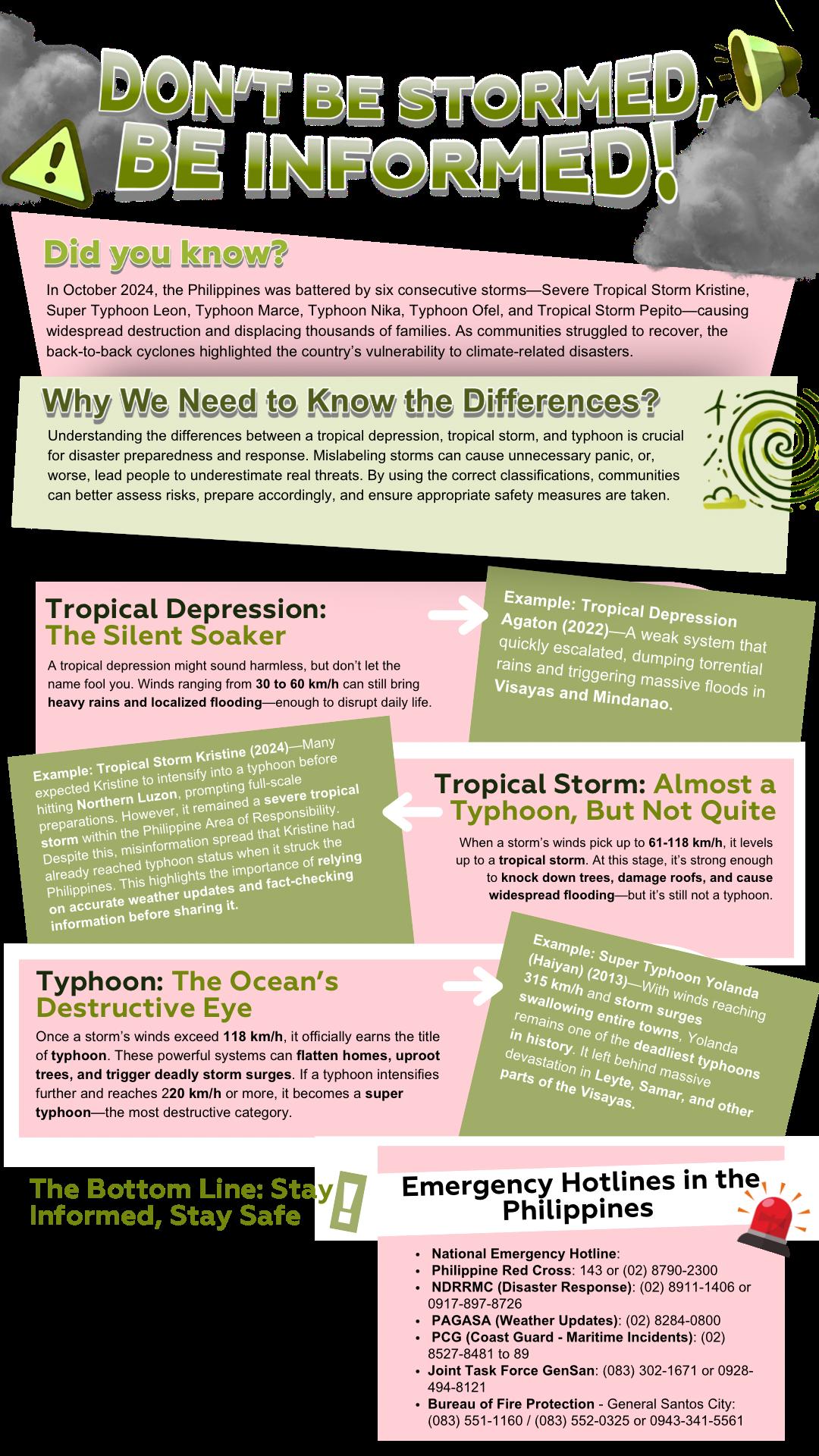



In order to obtain nutrients, it uses its radula, a specialized set of piercing teeth, to puncture it and suck out all of its contents like a straw. It digests everything but the chloroplasts. The slug insteads incorporates the chloroplasts into its digestive tract, utilizing them for photosynthesis. The slug is photosynthetic in nature, but it is able to thrive regardless of sunlight, making photosynthesis an alternative way of feeding itself.
A day in the life of an Eastern Emerald Elysia
meters. This eastern sea slug is known for its adaptability, surviving a wide range of salinity levels, from nearly freshwater to brackish salt water.
A sea slug’s sustenance
Eastern Emerald Elysia is a member of the clade Sacoglossa, which are known as herbivores and sap-sucking slugs. It feeds almost exclusively on Vaucheria litorea, an algae, whom the slug shares an obligate relationship with as it requires the algae to grow and develop.
The lifespan of Eastern Emerald Elysia is approximately 12 months with three stages: larval, juvenile, and adult stage. Its life starts as a veliger larva, characterized by a shell and a ciliated vellum that facilitates swimming and feeding. During this early stage, the larvae feed on small phytoplankton in the ocean. They possess two eyespots on each side of their mouth, and the ciliated vellum continuously brings food into the digestive tract, where it is sorted and filtered before being absorbed in the digestive gland.
As the larvae develop into juveniles, they emerge as translucent brown creatures with red spots on their bodies. This juvenile stage persists until they begin feeding on algae.
Upon reaching the adult stage, the slug develops a leaf-like appearance. Over time, the slug’s body turns to bright green due to the consumption of chloroplasts. This transformation typically occurs within three to five days, marking the transition to the mature adult stage.
Significance of a slug
Although Eastern Emerald Elysia does not directly benefit humans, it has captured the attention of the scientific community due to its remarkable ability to obtain and utilize chloroplasts from its food source. Researchers are particularly interested in how this sea slug maintains and utilizes these complex structures, as it already possesses some of the genetic blueprints necessary for photosynthesis before ingesting the chloroplasts. It blurs the lines between plant and animal biology, and its assimilation of inactive genes from algae provides a fascinating example of interspecies gene transfer. This phenomenon could potentially inspire new medical treatments or insights into evolutionary biology, ensuring that the slug remains a captivating subject of study and admiration in the scientific community.

by Junna Capili
A Celebration of Talent Beyond the Court
Beyond sports, the excitement soars with the highly anticipated return of two fan-favorite competitions:
but also fosters stronger connections among students, embodying the true spirit of sportsmanship.
Six, Action-Packed Sporting Events
The Sportsfest features six major sports, drawing out the best in MSU’s athletes. With thrilling matches underway, fans eagerly watch as each team battles for dominance. The action-packed schedule of various sports ensures an unforgettable experience for both competitors and spectators.
This
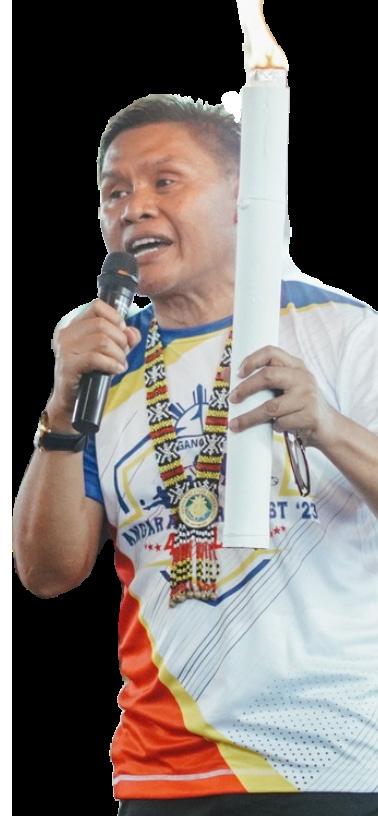
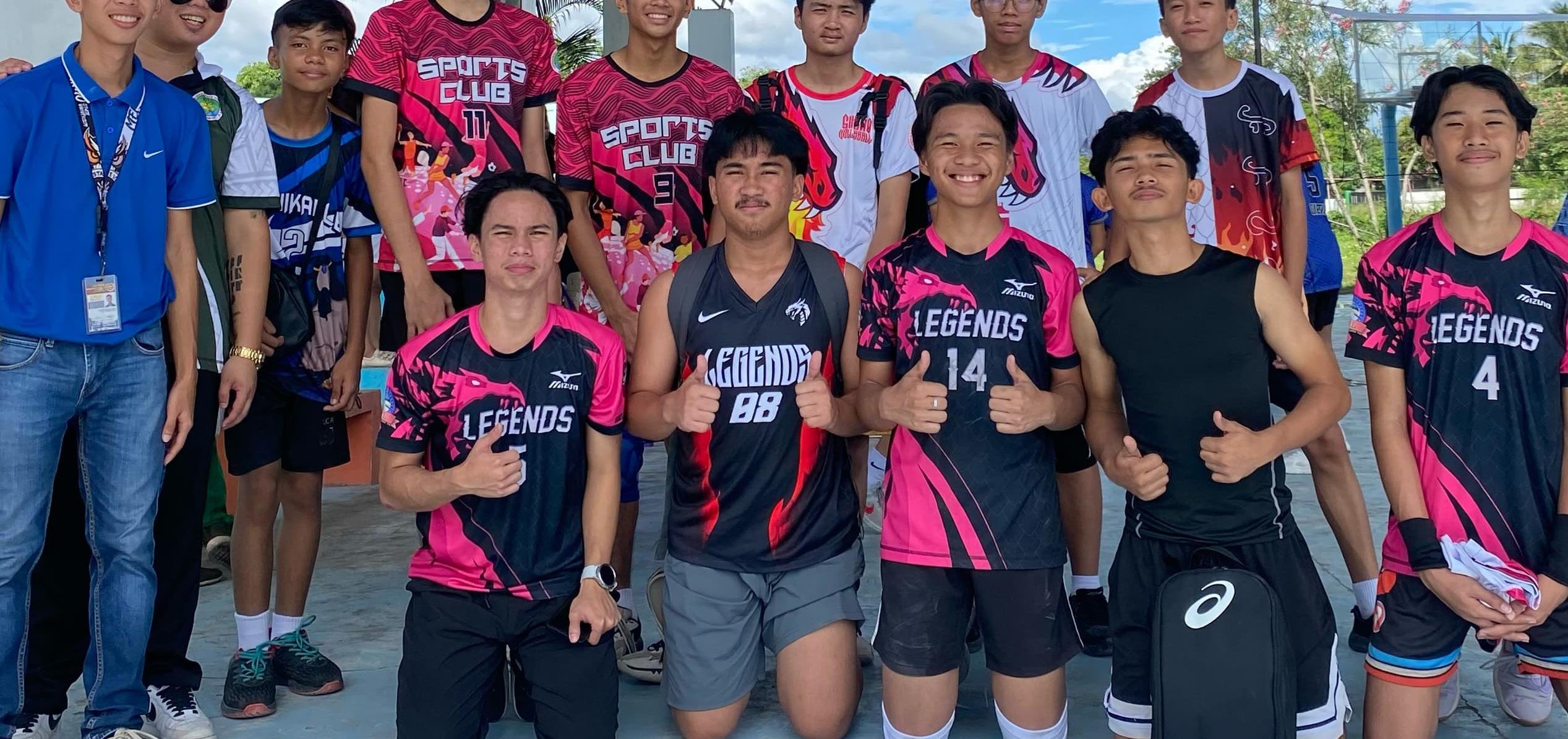

Led by Captain Feevol Into, the MSU Legends Men’s Volleyball Team faced a disappointing yet fulfilling outcome at the district meet held on November 23, 2024, at Alagao National High School.
Despite only being informed of the meet a day prior, the team showed up ready to compete with passion in their hearts.
Their match ended in a 0-2 loss against Irineo Santiago National High School of Metro Dadiangas, but, the experience was memorable for the players.
Key moments included every scoring point, which fueled their determination and camaraderie on the court.
In order to maintain their focus, Captain Into motivated his teammates with uplifting cheers and reminded them of their capabilities.
Although they fell short of victory, the resilience and teamwork displayed left a lasting impression on the players.
by Princess Enriquez
Junna May Capili, a Senior High School student from Mindanao State University, has been named a TOP 6 Grand Finalist in the highly anticipated MSU Got Talent Finals 2024, which will take place on November 15 at the MSU Gymnasium.
Popularly known as “Miss Flexy,” Junna earned her spot as a TOP 6 Grand Finalist with her enthralling performance.
Her act featured a spectacular blend of rhythmic gymnastics and dance, demonstrating her extraordinary skills with ropes, clubs, and a ribbon.
“I didn’t expect that I would be part of the Top 6 since there were so many talented auditionees, but I believe that if it’s meant to be, it’ll be. I’m happy that I was chosen to showcase my talent to a bigger audience this coming Friday,” said Capili.
As she prepares for the Finals, Junna embodies the spirit of grit and passion, inspiring both students and aspiring performers to follow their dreams with unwavering determination.

While victory eluded them, the Legends left the court with heads held high, knowing they fought well and had forged lasting bonds that would propel them into future competitions.
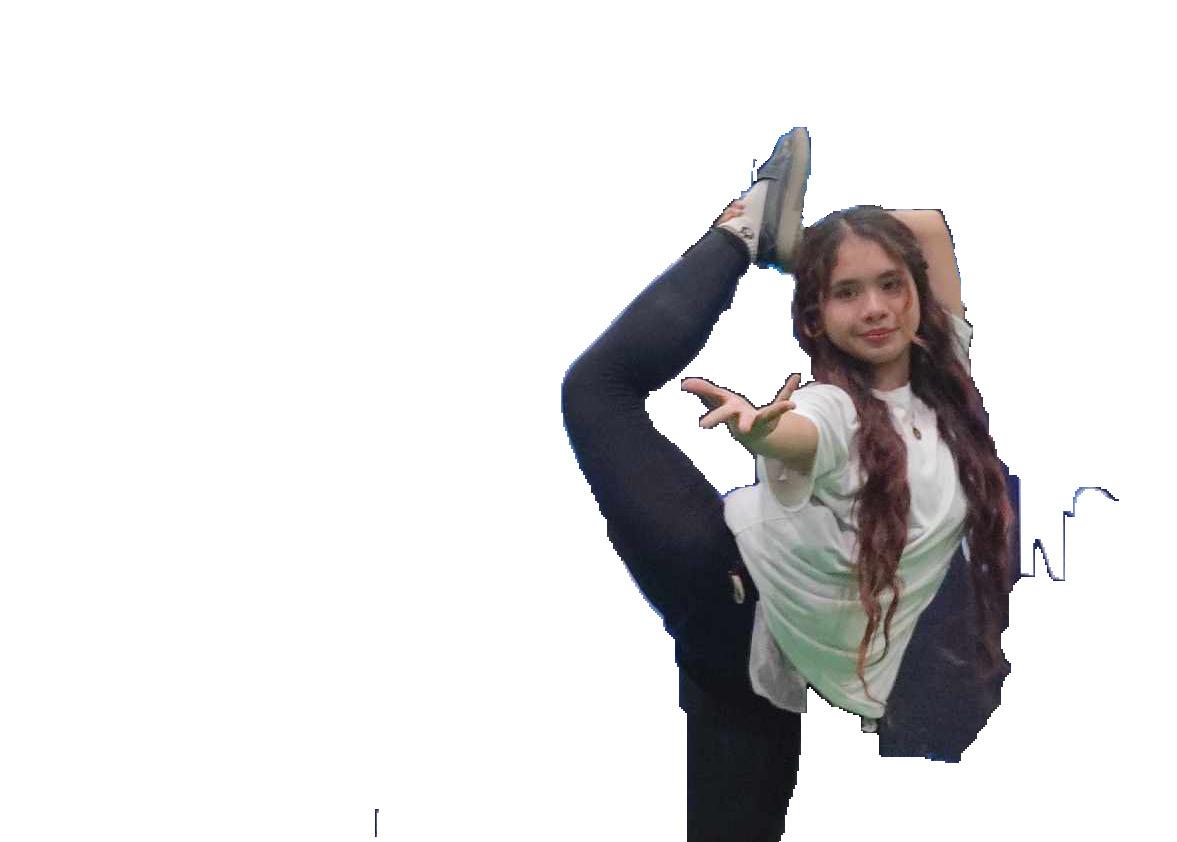





by Jezzu Quimosing
name has become synonymous with excellence in gymnastics. From the streets of Leveriza to standing atop the Olympic podium, Yulo has defied the odds and silenced critics. Except, perhaps, some within his own family. Instead of basking in his well-earned glory, Yulo is forced to maze through a minefield of family drama, making his journey all the more remarkable.

But behind the glitter of his medals lies a family saga that has managed to steal some of the spotlight. If Yulo’s gymnastics routines are a display of perfection and discipline, his family life seems to be the opposite:
The story of Yulo’s family is one that could rival a teleserye. His rise to fame lifted them out of poverty, but instead of a standing ovation, some members have taken center stage for less-than-supportive reasons. Case in point: his mother, Angelica Yulo, whose eyebrow-raising behavior on social media has led many to question her priorities. When she cheered for Japan’s gymnastics team instead of her own son, it wasn’t just awkward—it was downright baffling. Gloating over her son’s
Then there’s the issue of his girlfriend. Angelica has publicly blamed Carlos’s relationship with Chloe San Juan for their family’s rift, even referring to her as “that girl.” Instead of celebrating her son’s achievements, she has chosen to air grievances that paint her
He has been a consistent source of support, visiting Carlos, offering advice, and staying present in his life. Mark’s emotional reaction to his son’s Olympic triumph, a rare moment of unfiltered pride, starkly contrasts Angelica’s cryptic and, at times, combative
from his choice of coach to his relationship. But let’s get one thing straight: Carlos doesn’t owe anyone an explanation, least of all those who haven’t been in the gym with him at 5 A.M., perfecting his craft.
One recurring criticism has been that Carlos’s





by Jezzu Quimosing
Then came the clash of bodies and wills— the raw, unrelenting dance of strength and strategy. In the Taekwondo Women’s Bantamweight category, Siklab’s warrior faced opponents taller, stronger, seasoned by countless battles. But power is not just in the limbs; it is in the fire behind every strike, the will behind every block. Gold. A medal earned not just through combat, but through an unbreakable spirit.
Beyond these shining moments were battles fought in shadows, struggles unseen yet no less fierce. Games where numbers were against them, yet their hearts carried the weight. Rallies where exhaustion crept in, yet they found strength in the roar of their own voices. The courts bore witness to their defiance, the fields to sprints that turned seconds into eternity.



brilliance, every check a prelude to triumph. With quiet precision, they outmaneuvered each rival, every victory a monument to skill beyond years. And when the dust settled, they stood alone, crowned as the board MVP.
But Siklab never stood alone. Faculty and student coaches stood at their backs, not as spectators, but as pillars of strength. They were the hands that lifted the weary, the voices that carried through the noise, the steady presence that turned doubt into determination. They were the embers that kept the fire alive. Victory is not always counted in medals. Some wins are measured in resilience, in the perseverance to


This is not the end. This is a beginning. The flame does not dim, the flame rises.



October 15, 2024, University Gymnasium - At the recently concluded Taekwondo Competition during the final day of the 51st Intramurals of Mindanao State University, Louise Reign Bation of the Senior High School Legends Department showcased her skills, executing fiery and powerful kicks that secured her the gold medal in the Women’s Bantamweight Sparring Category (49-53 kg).
